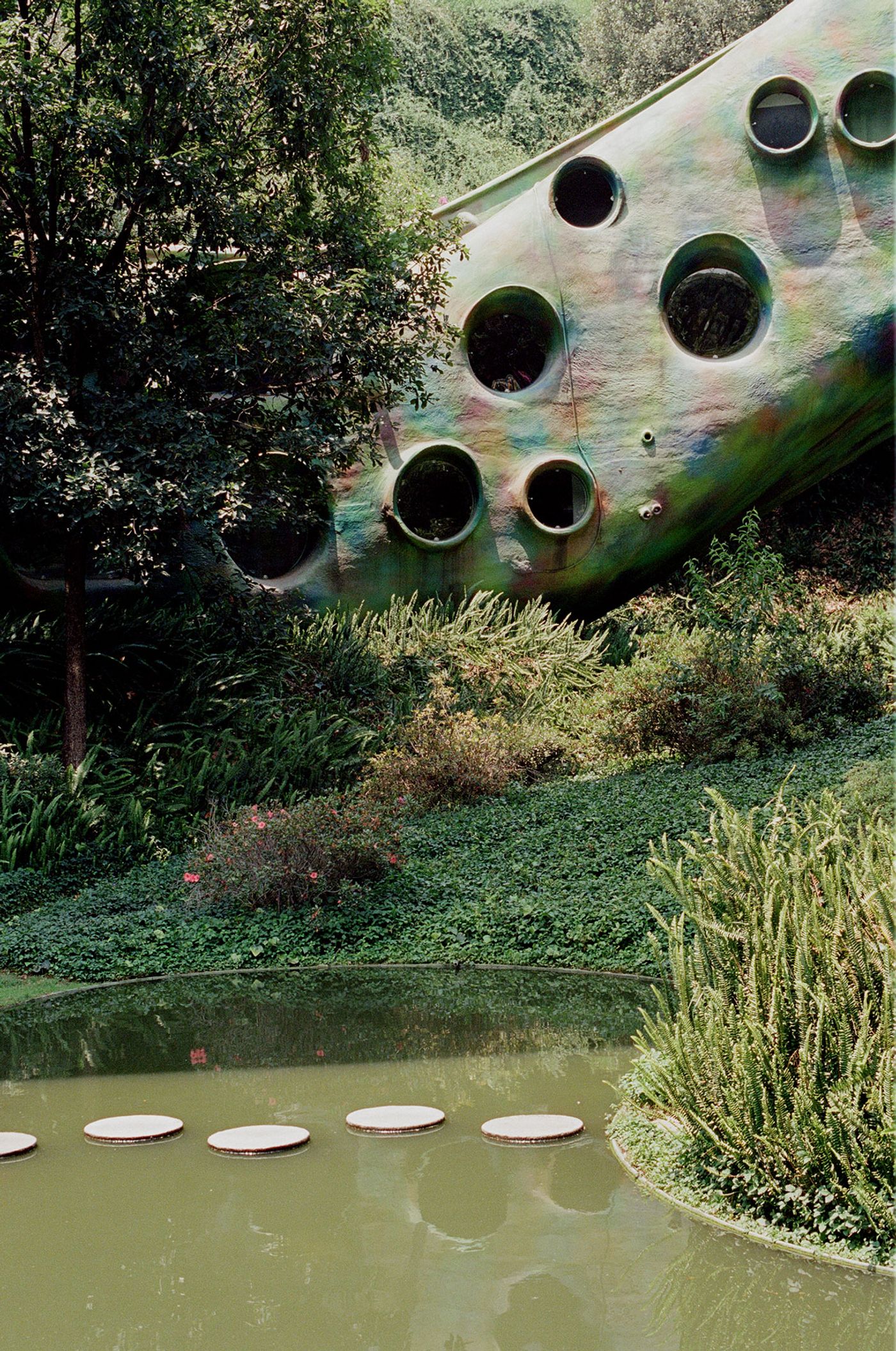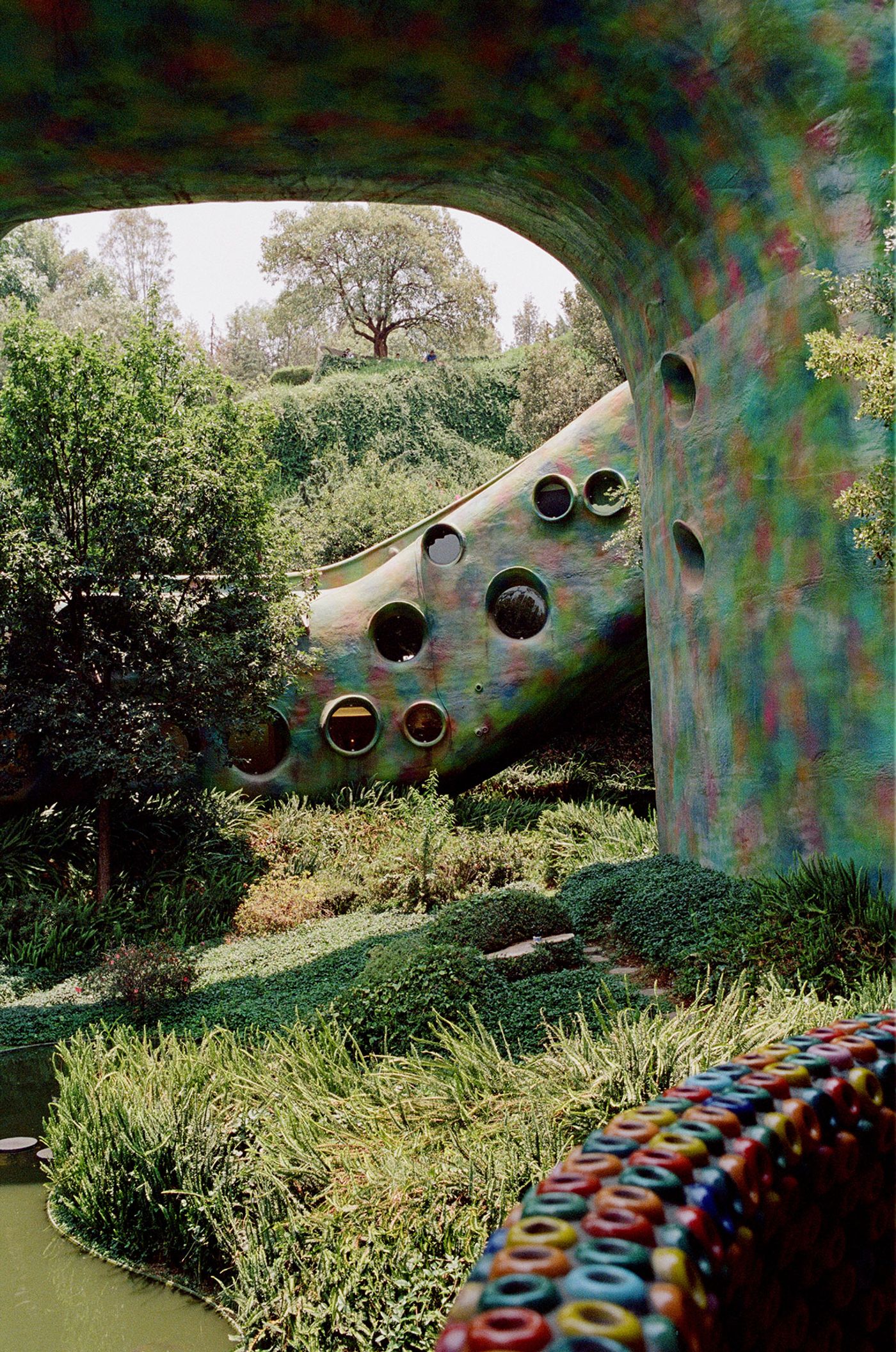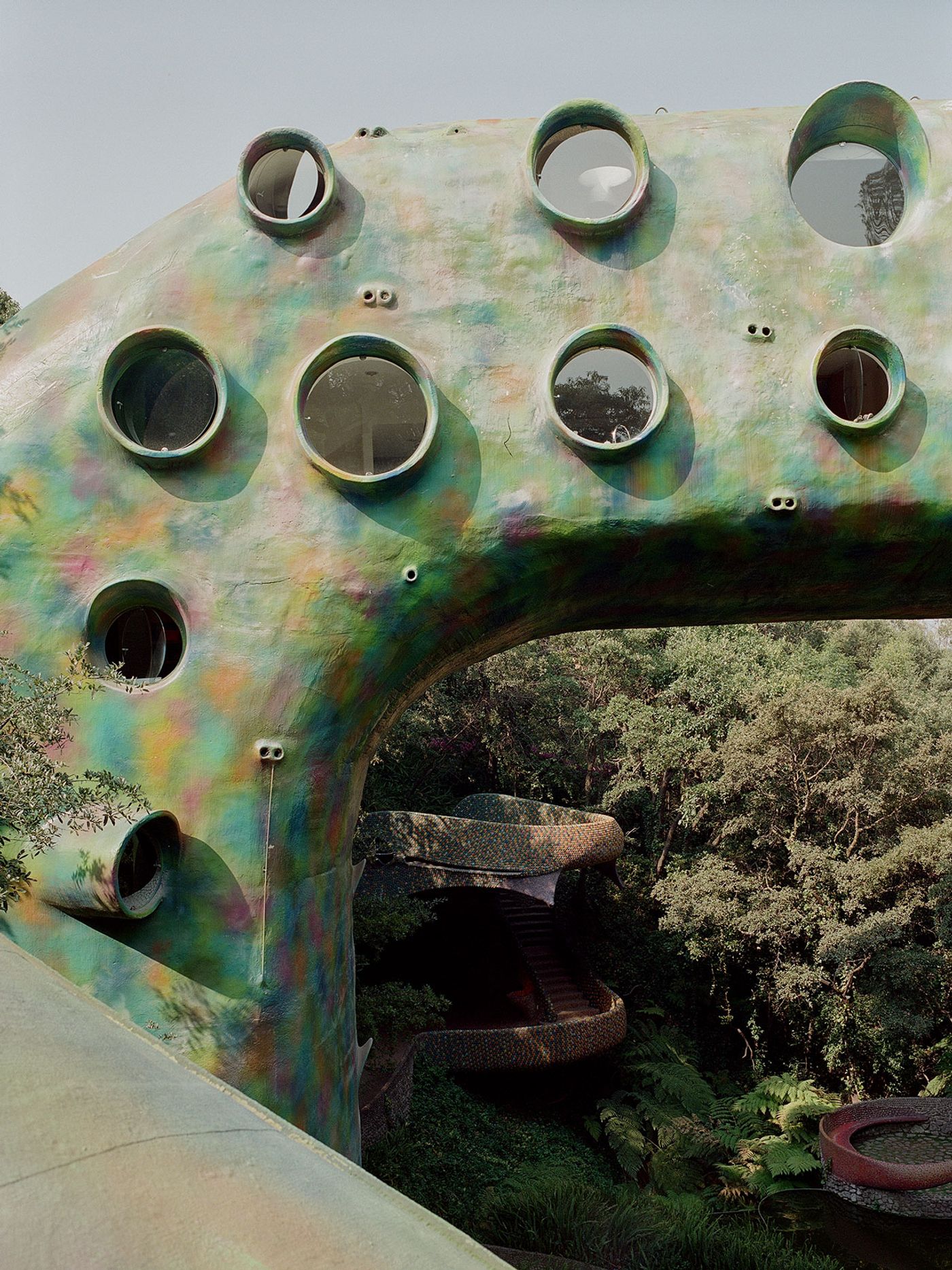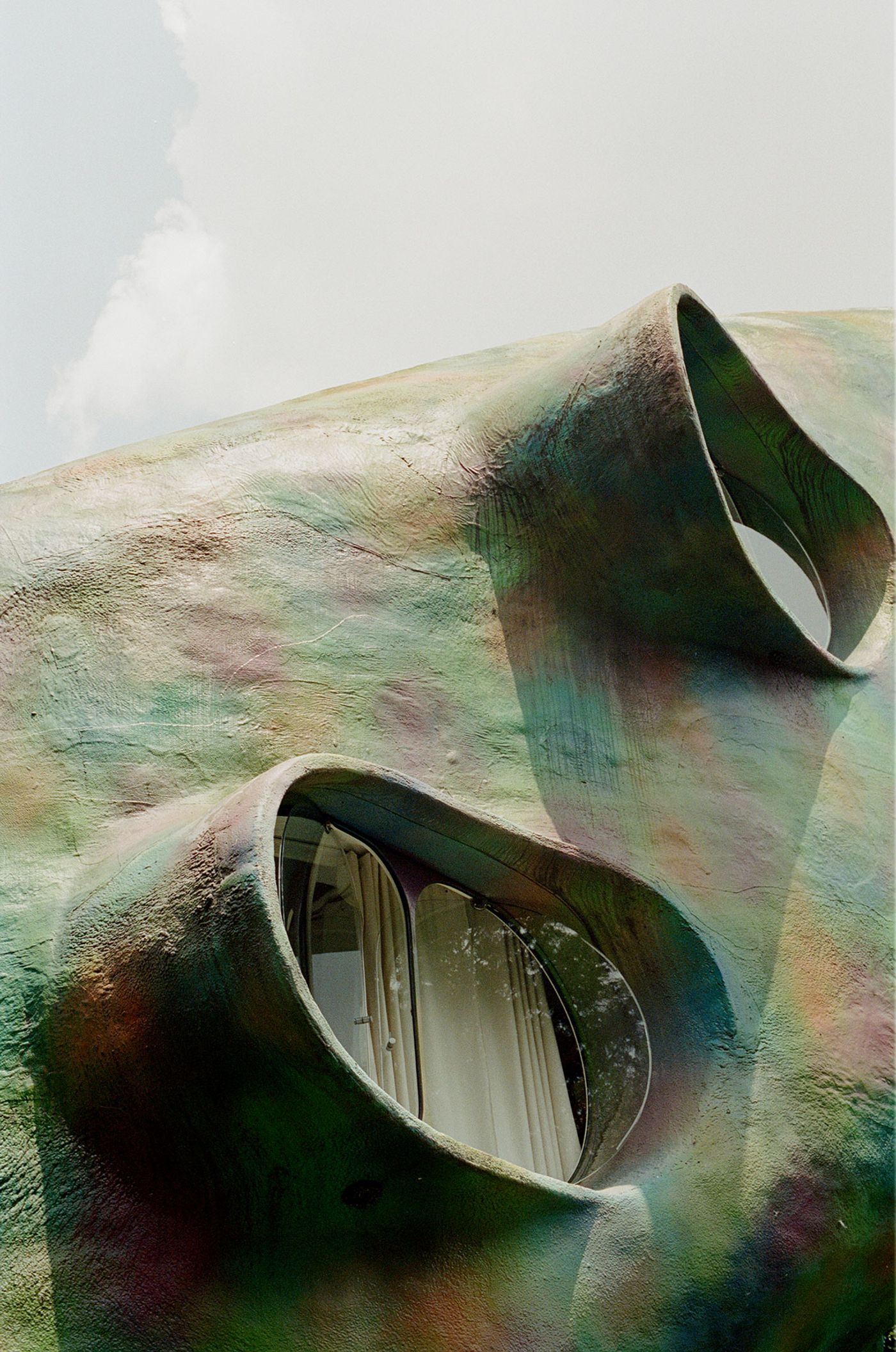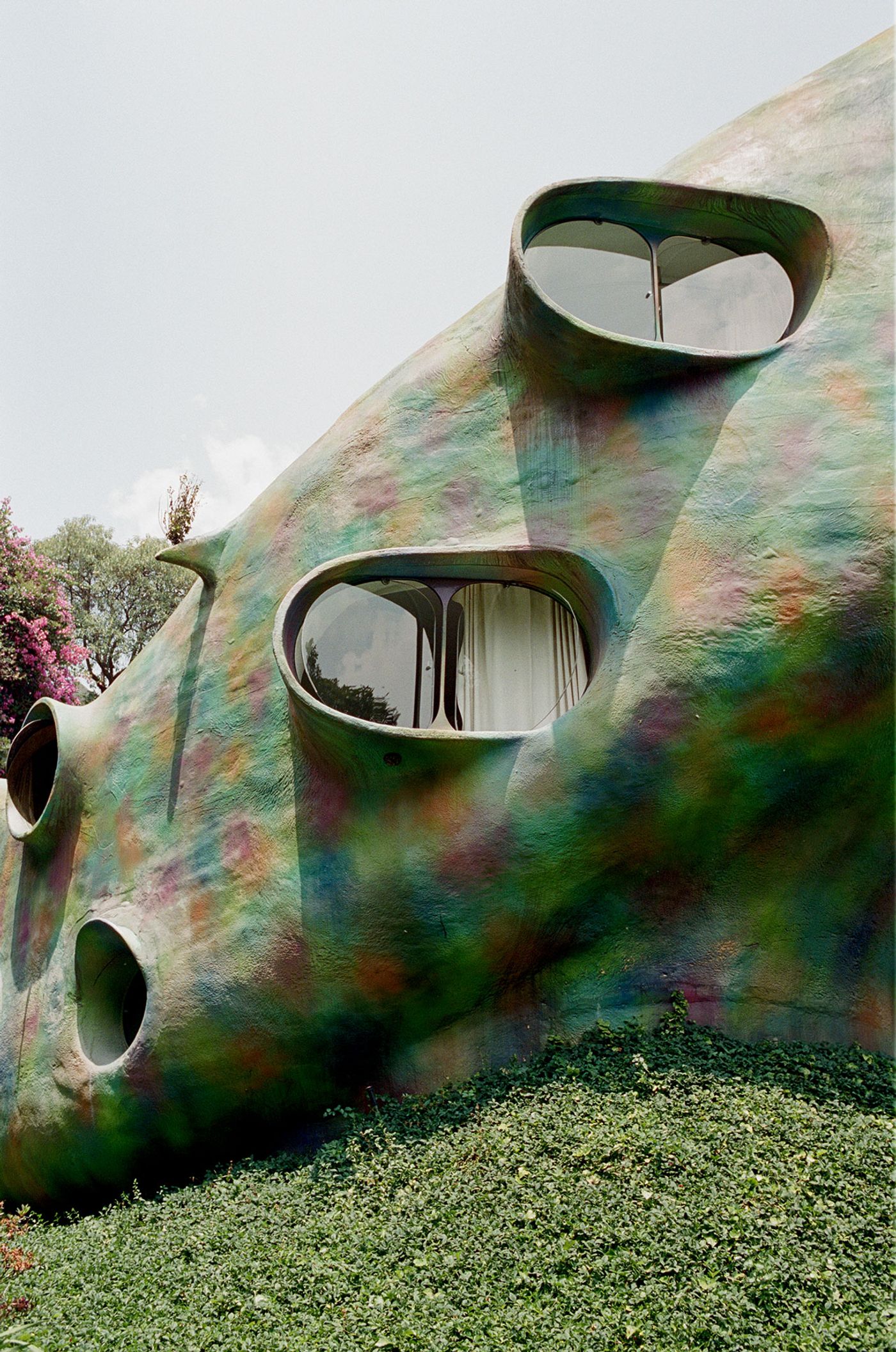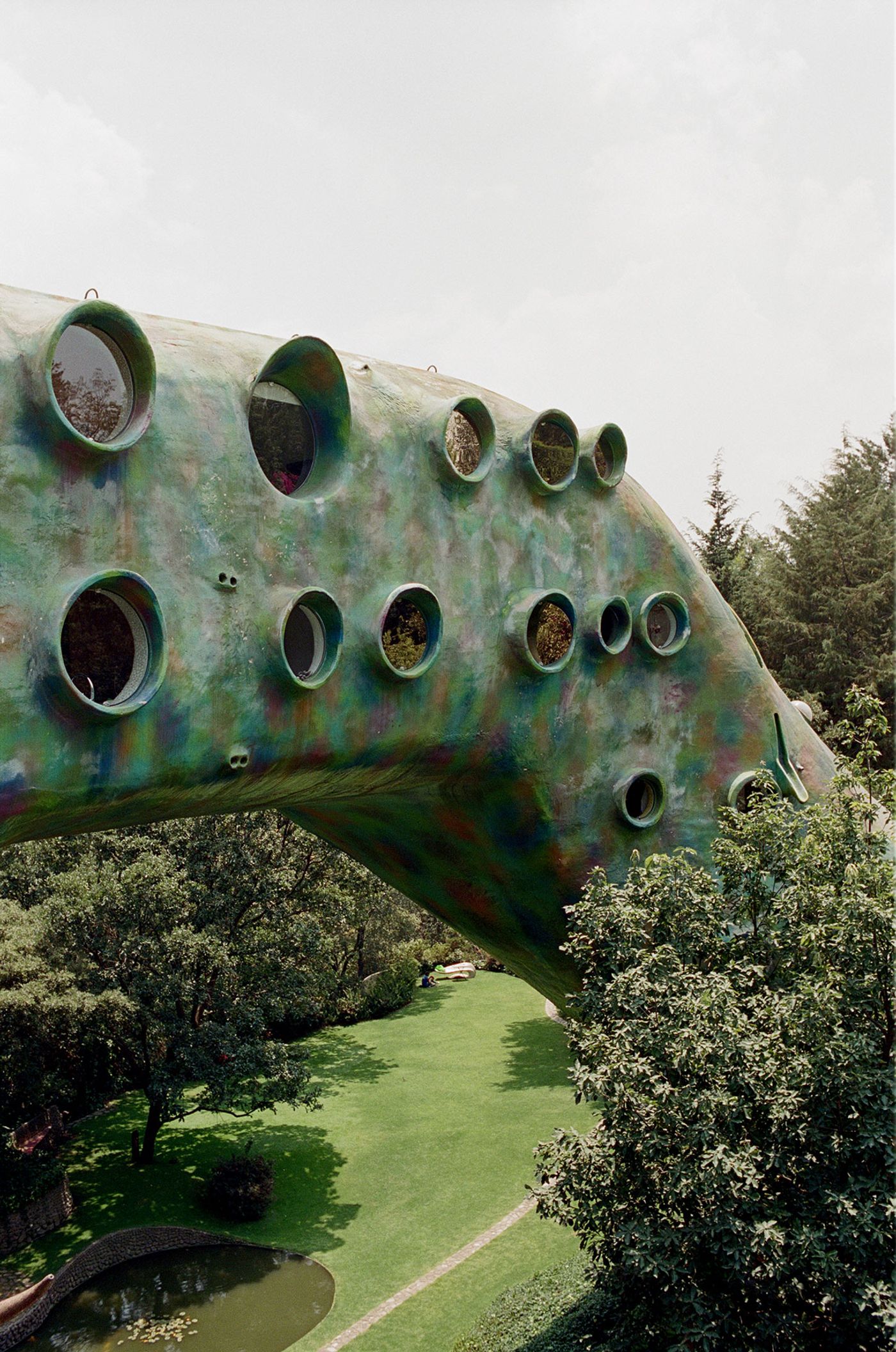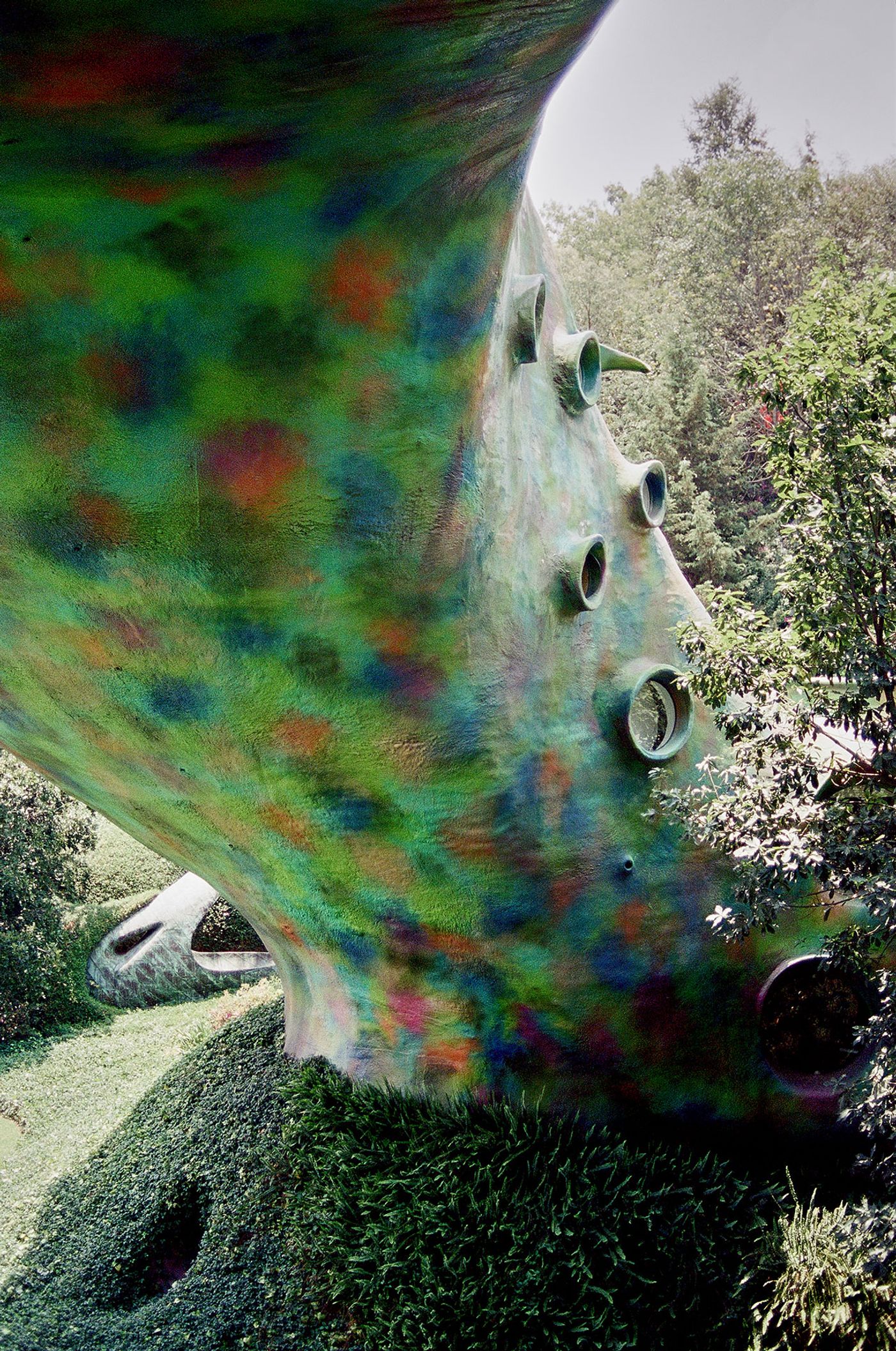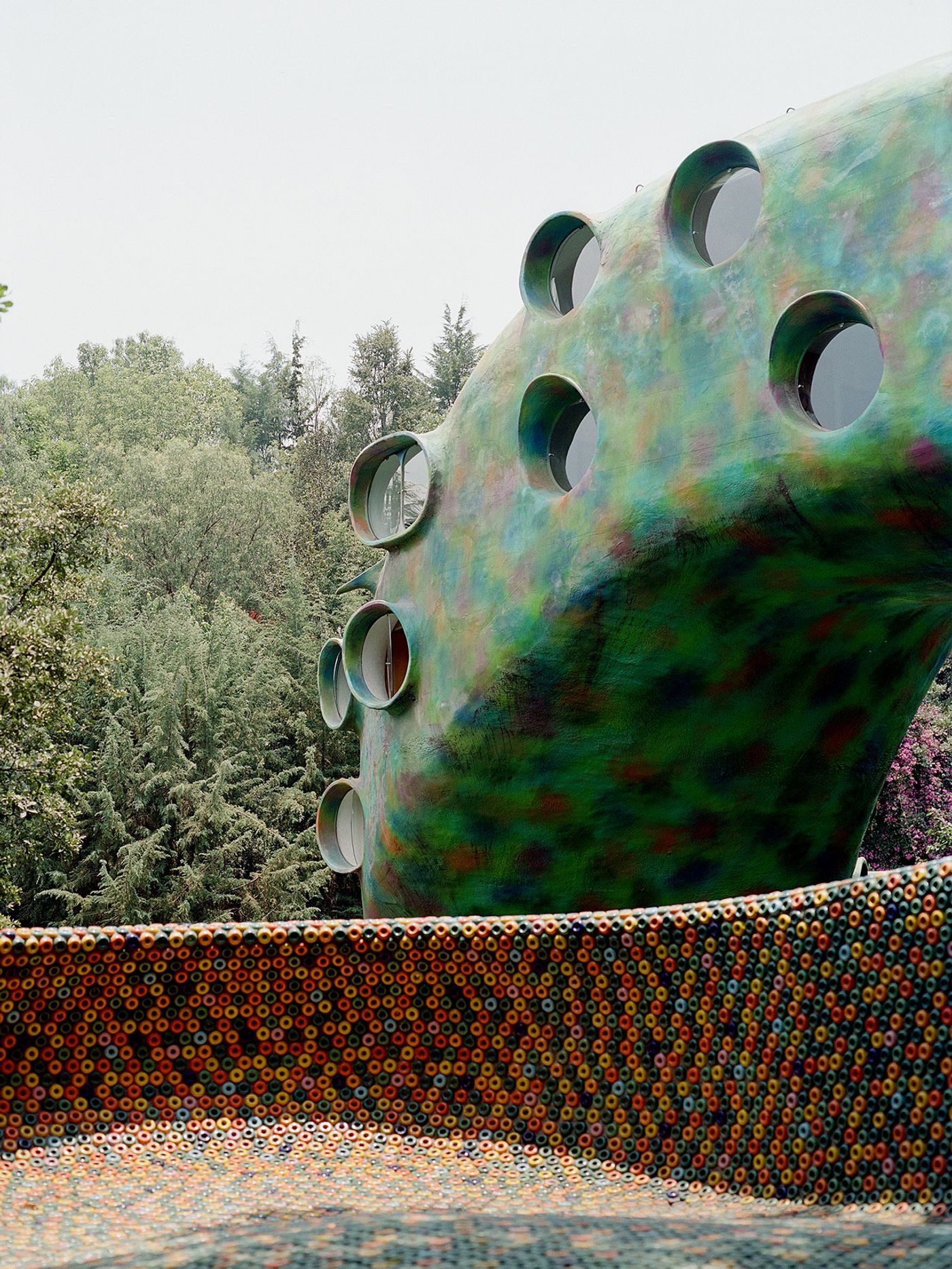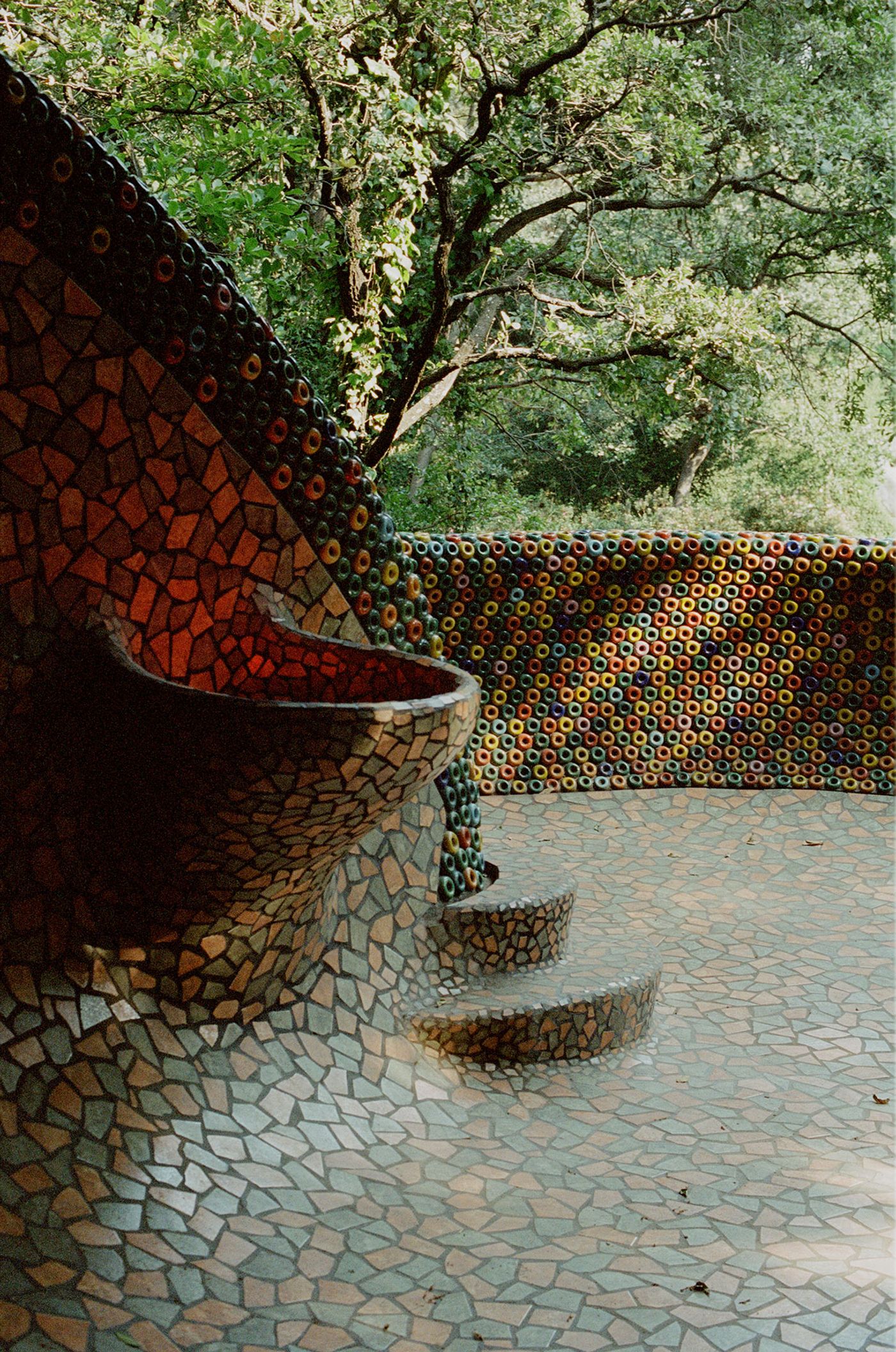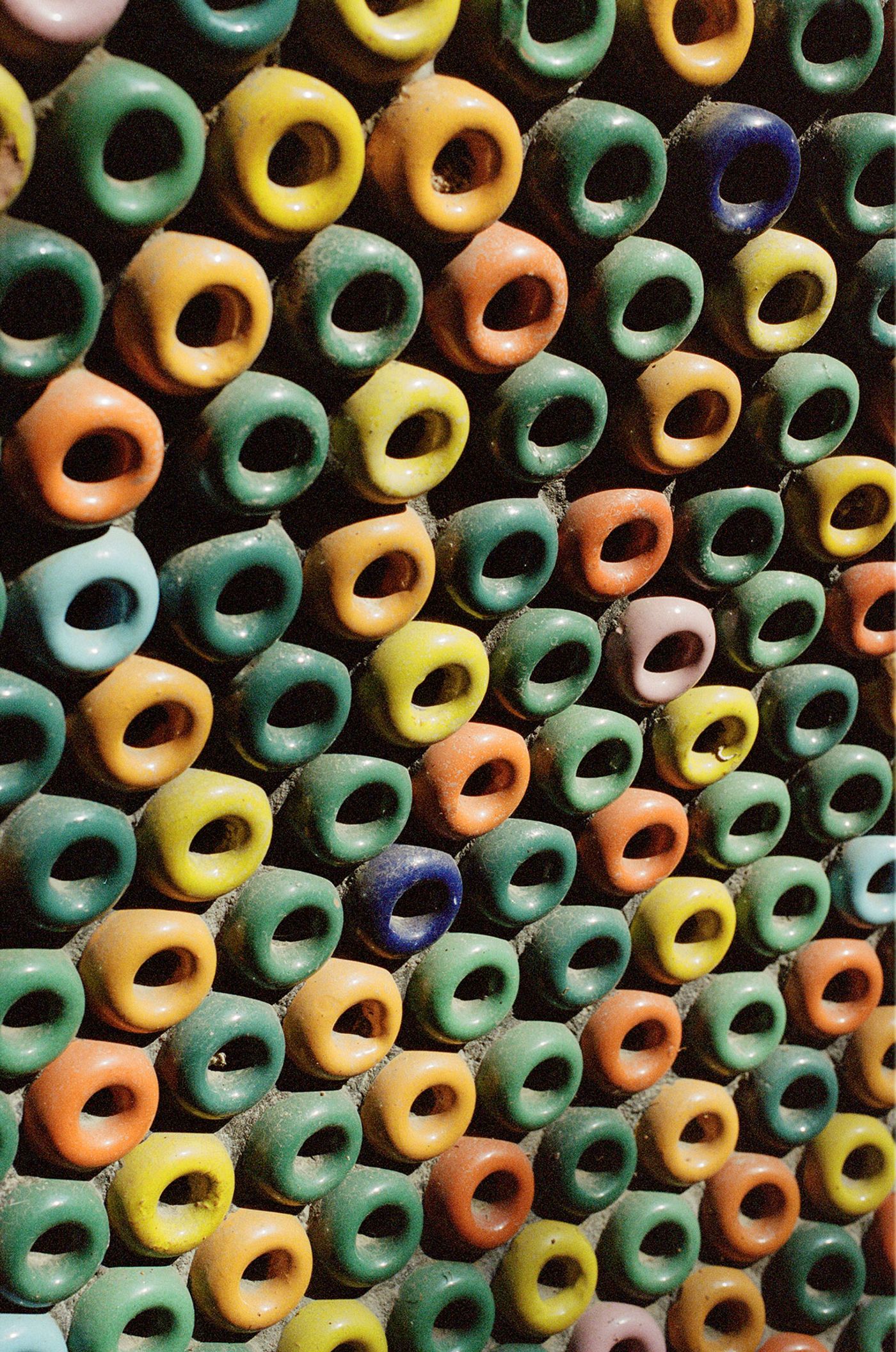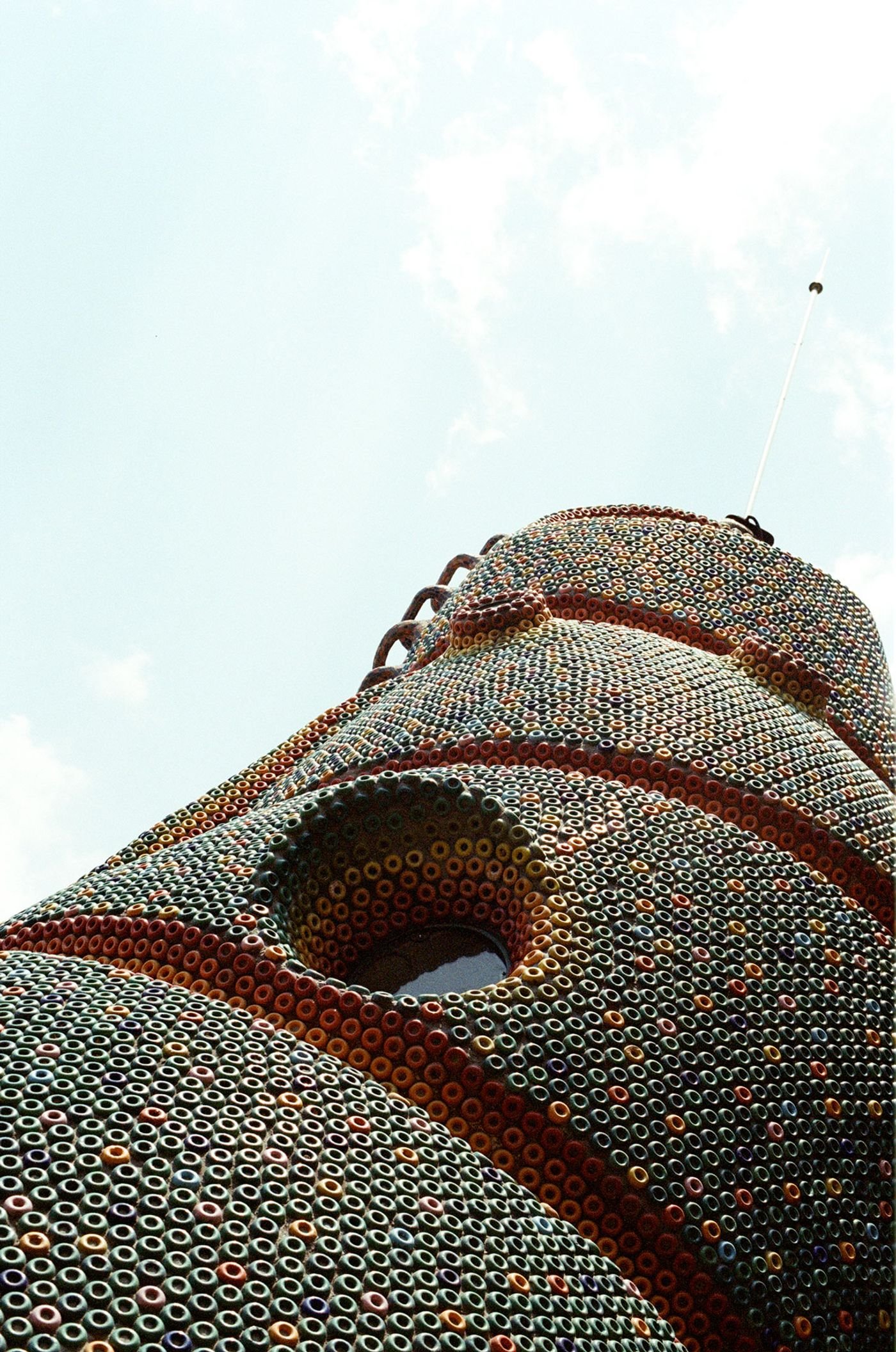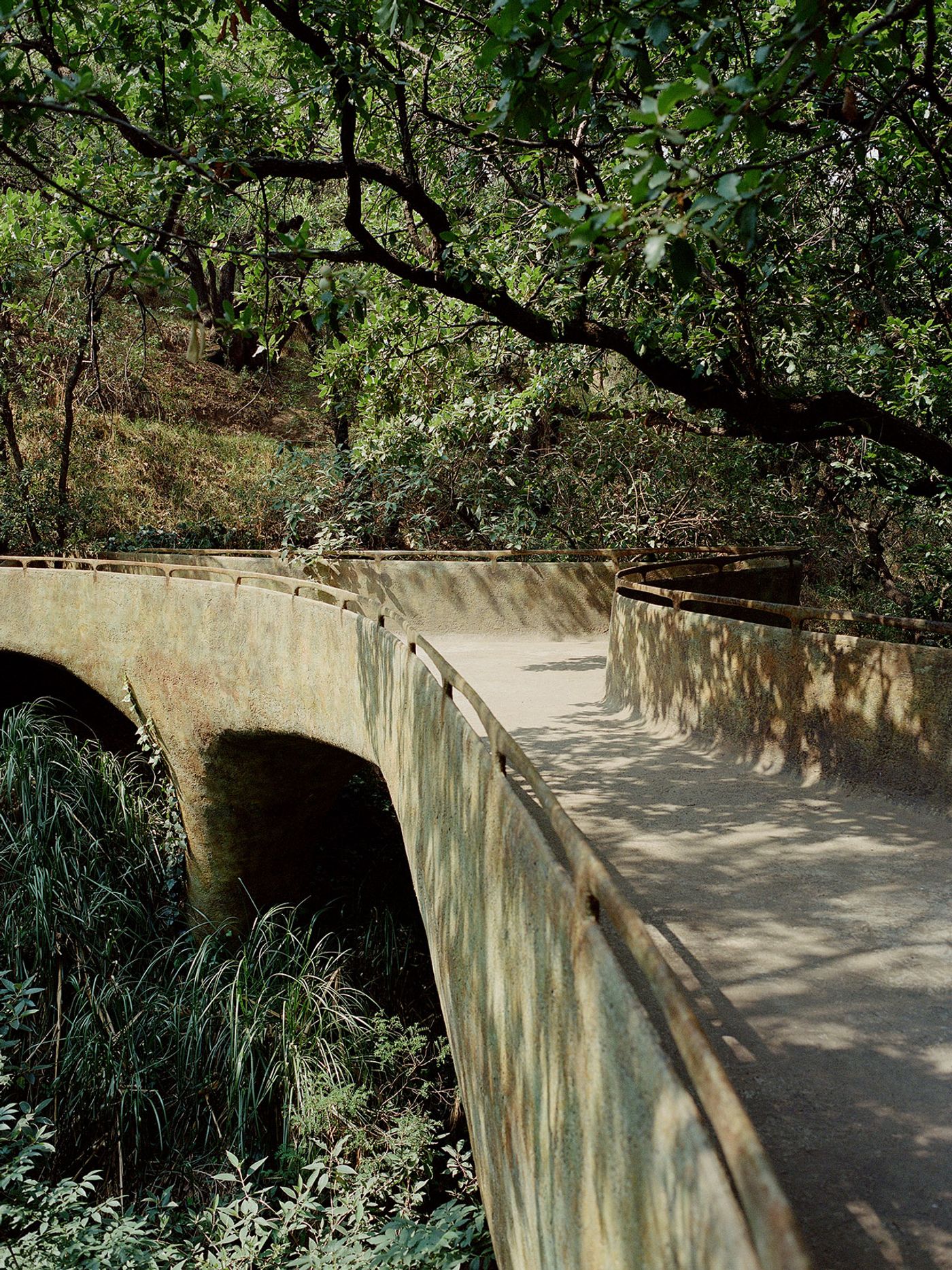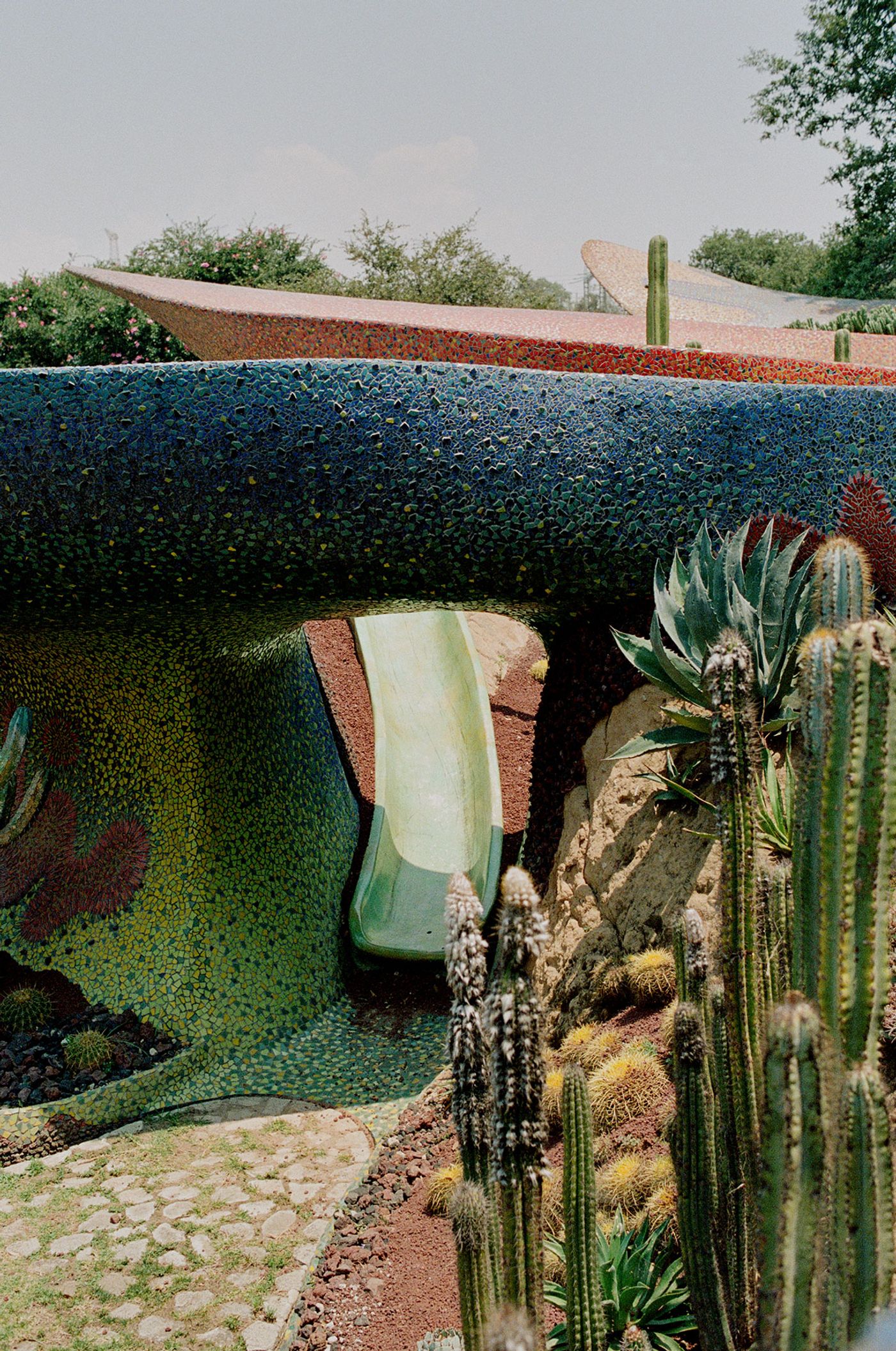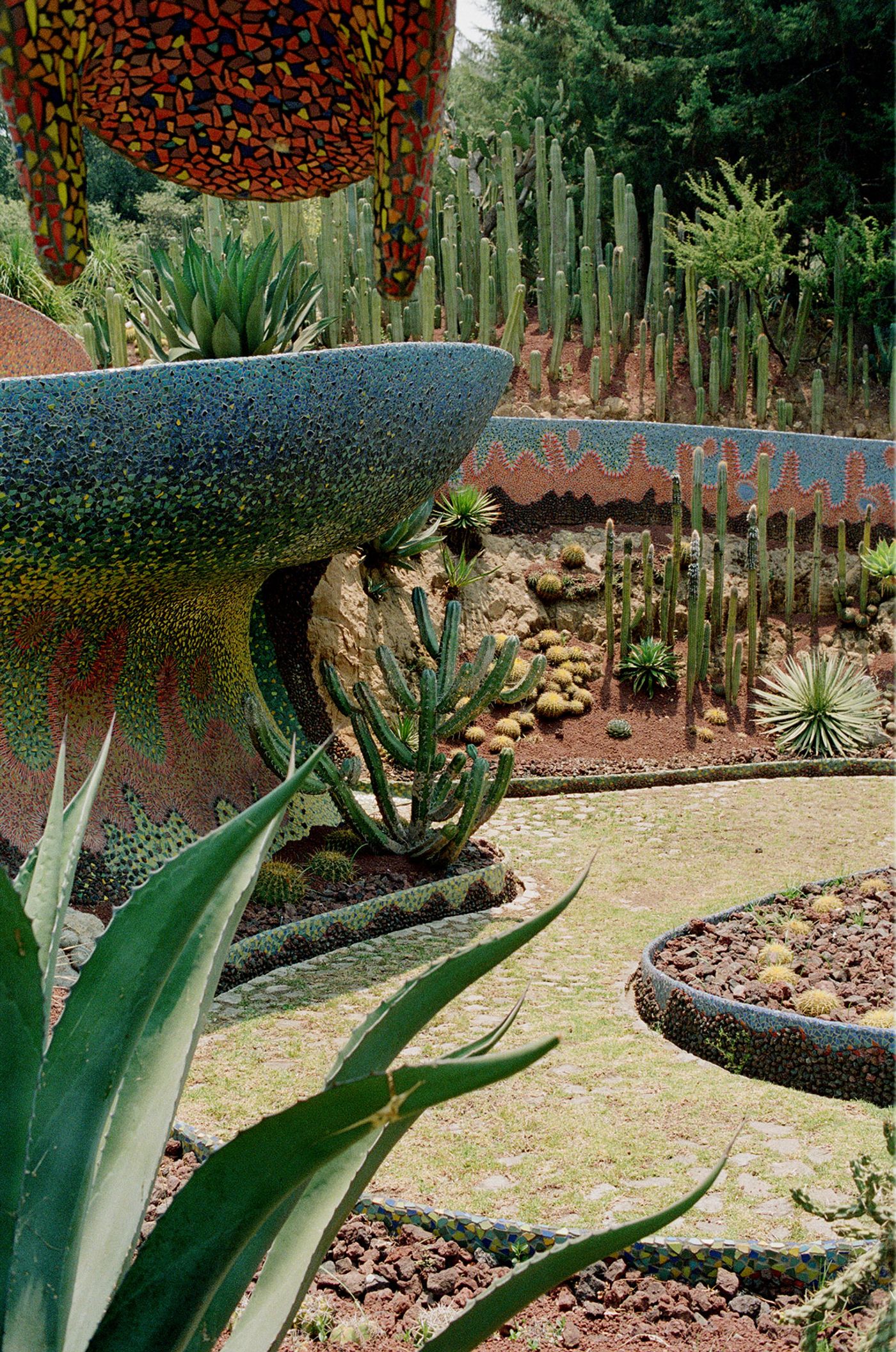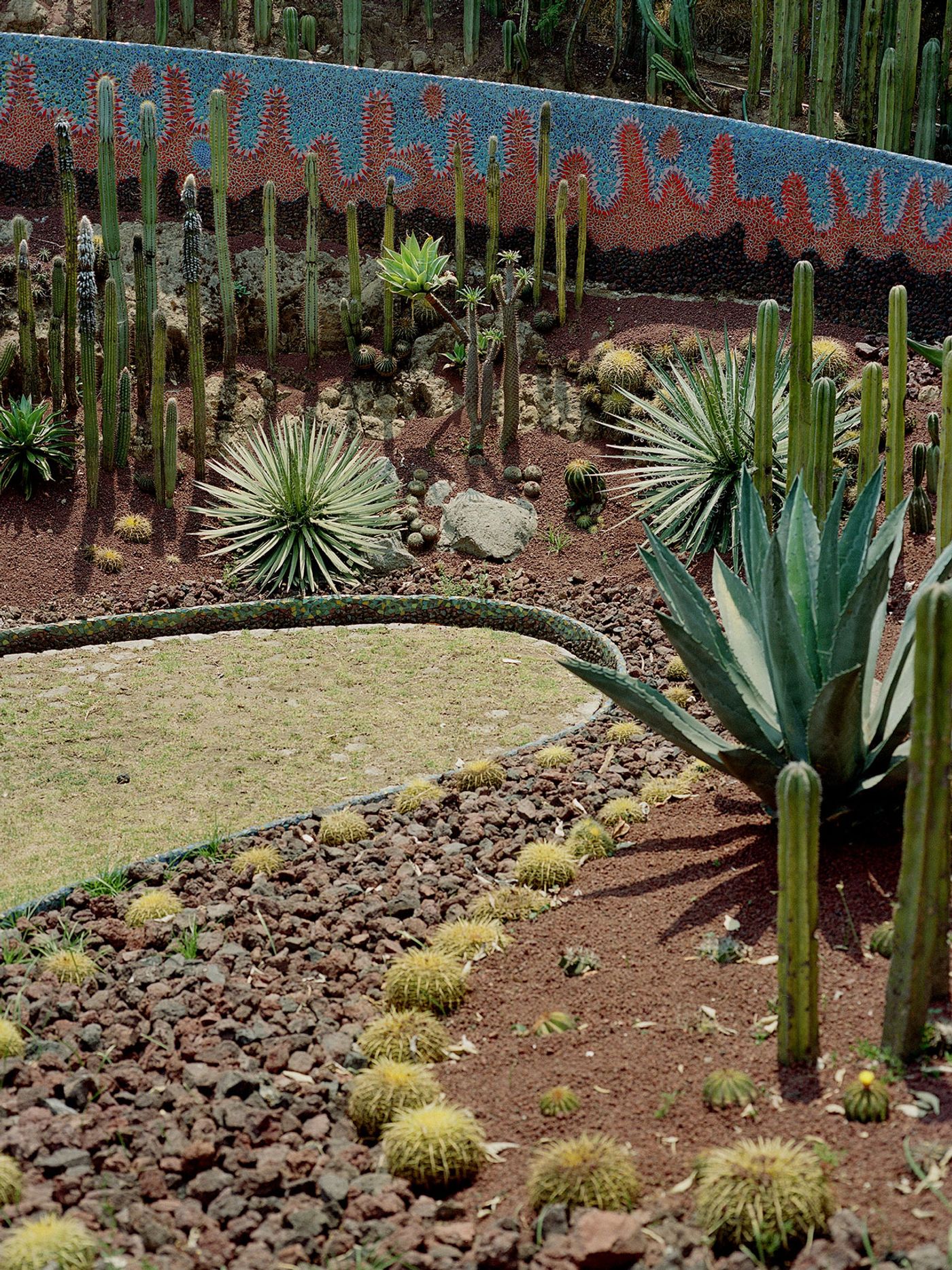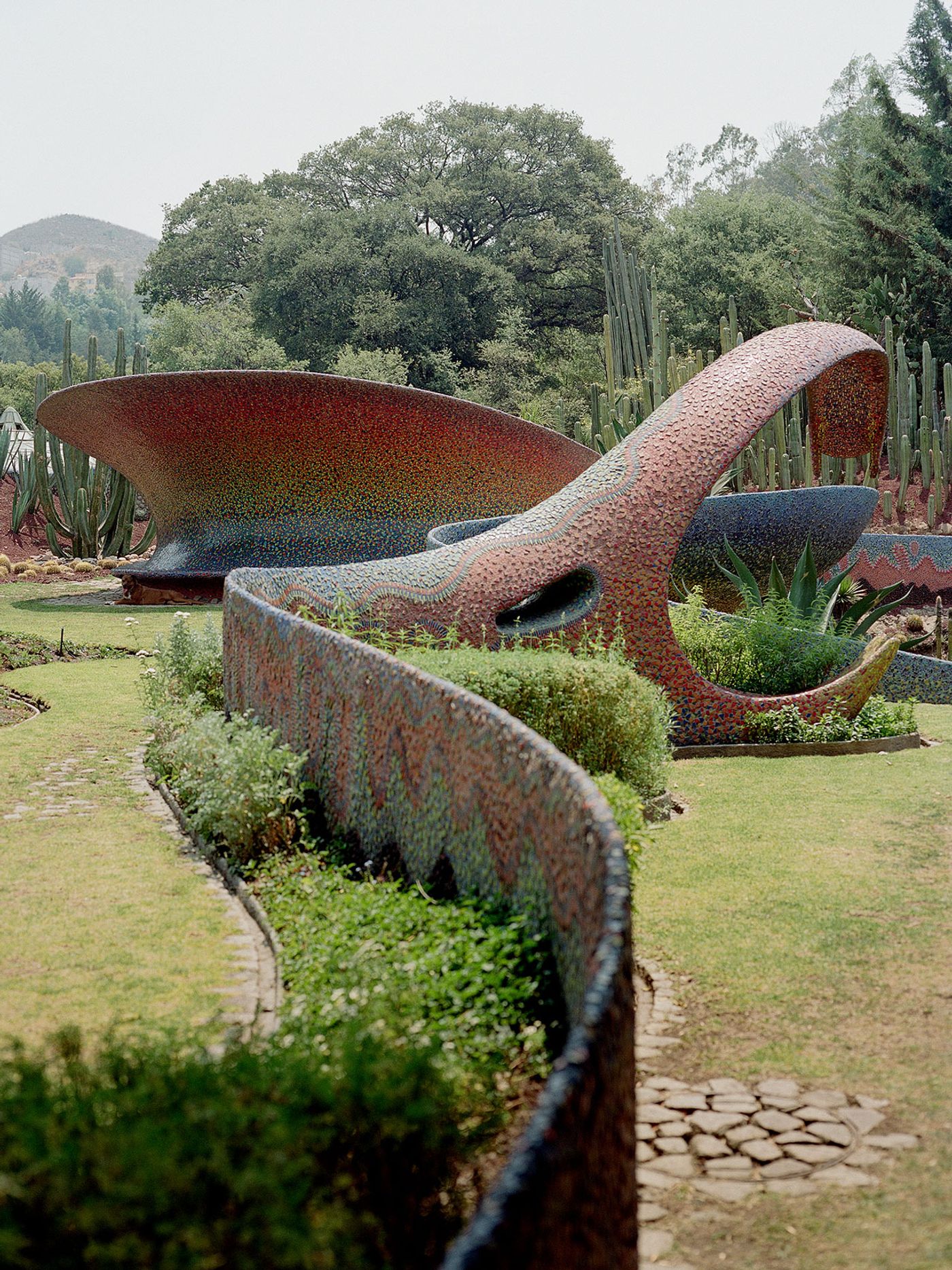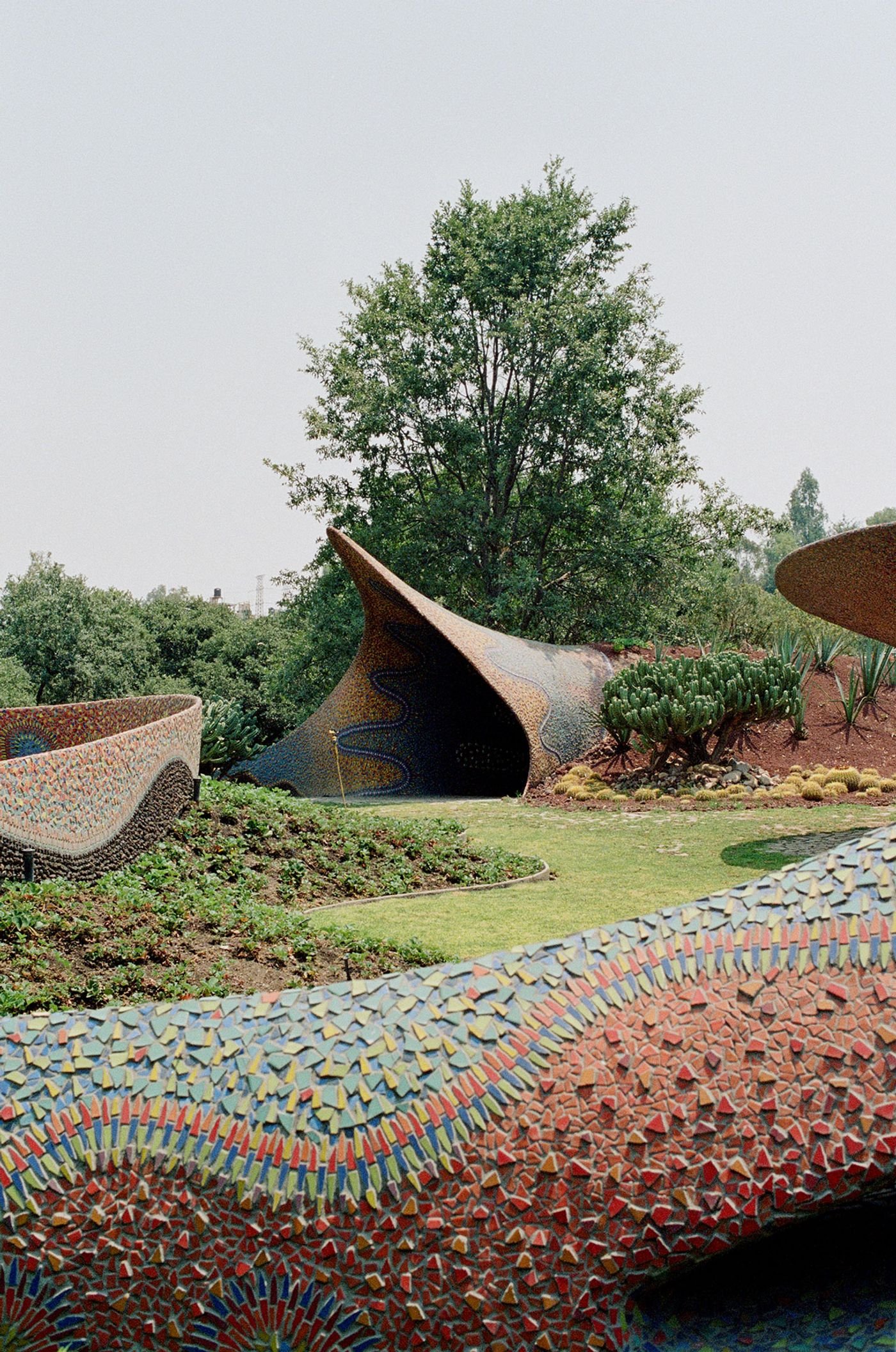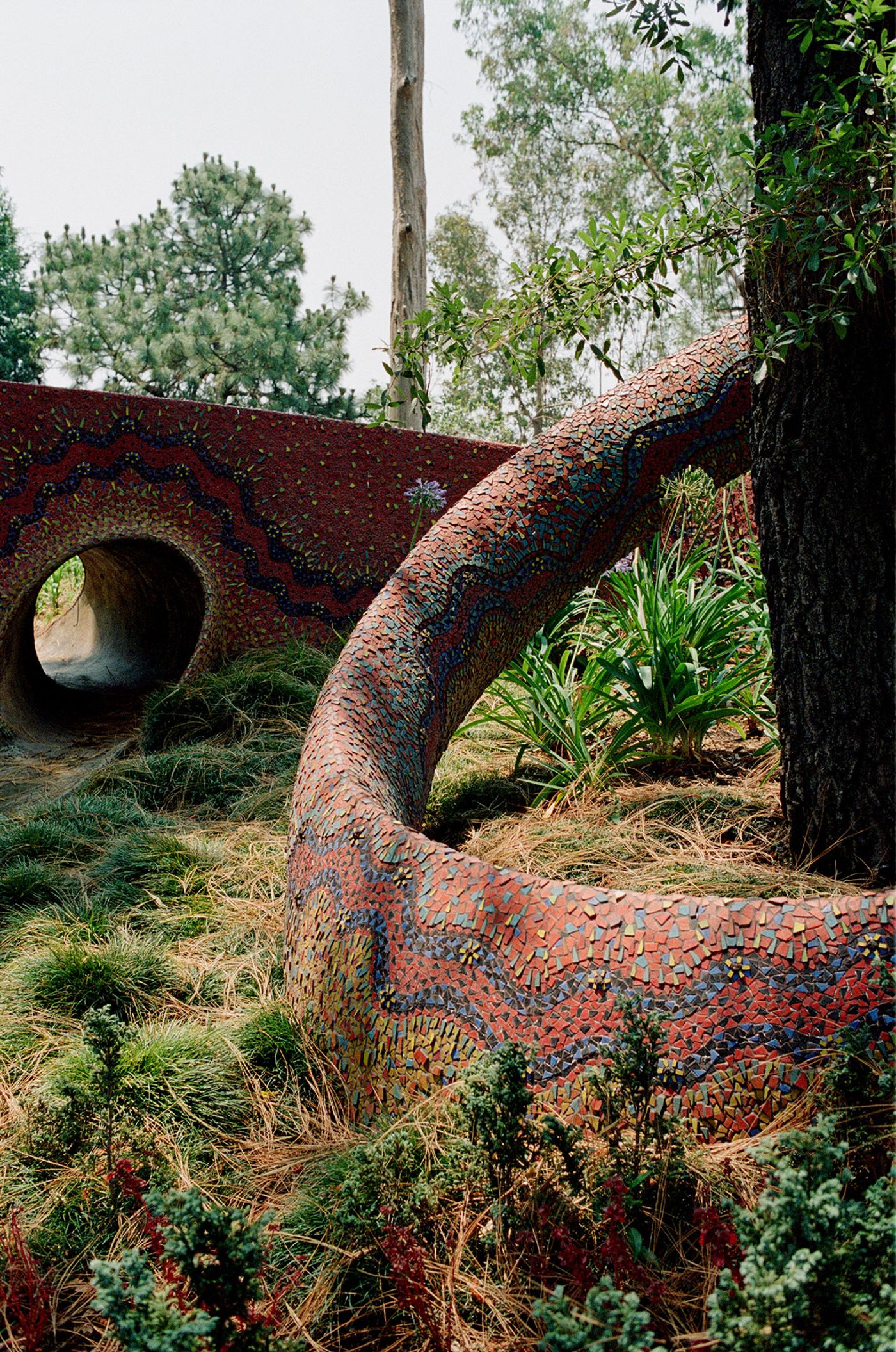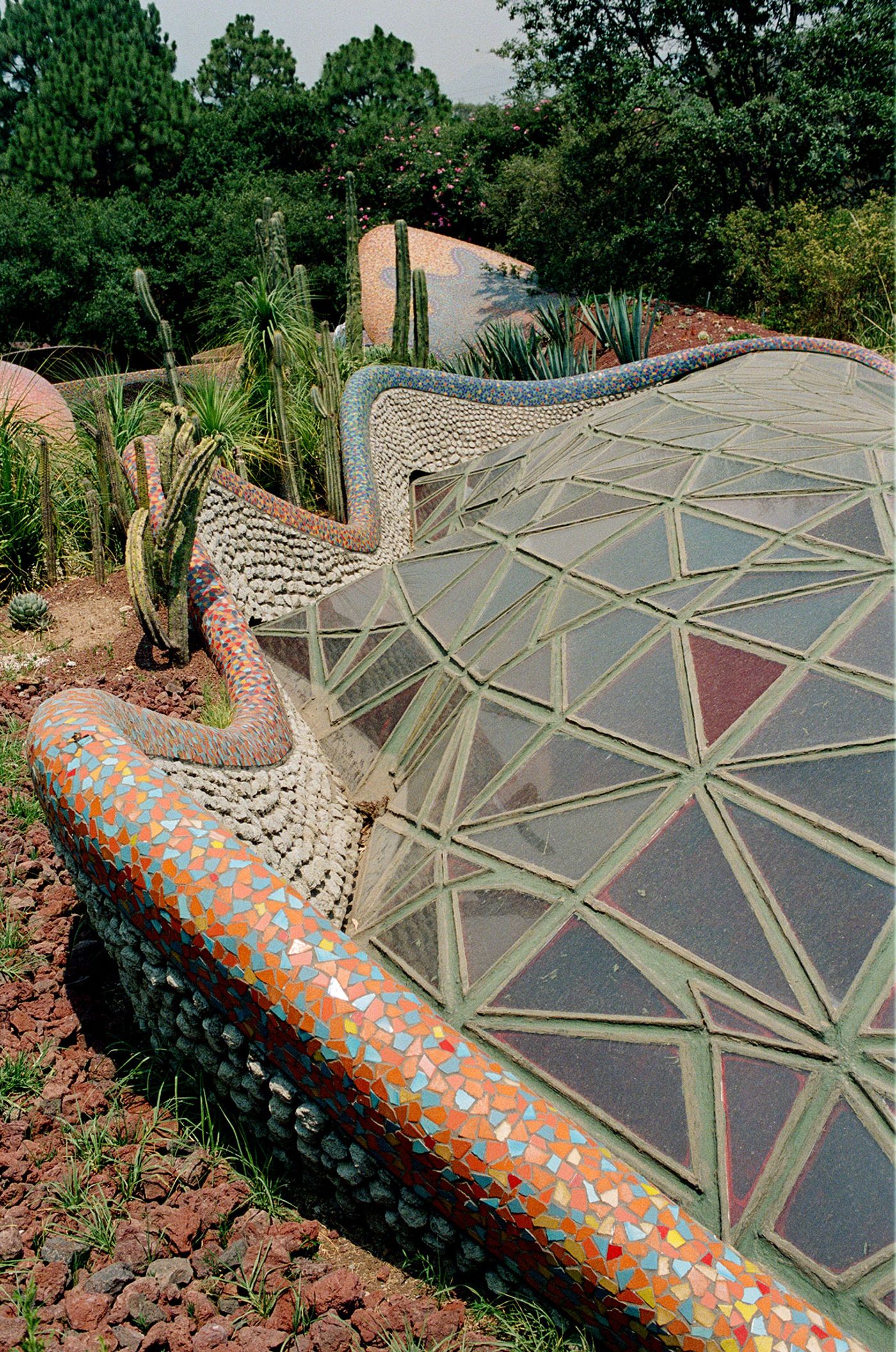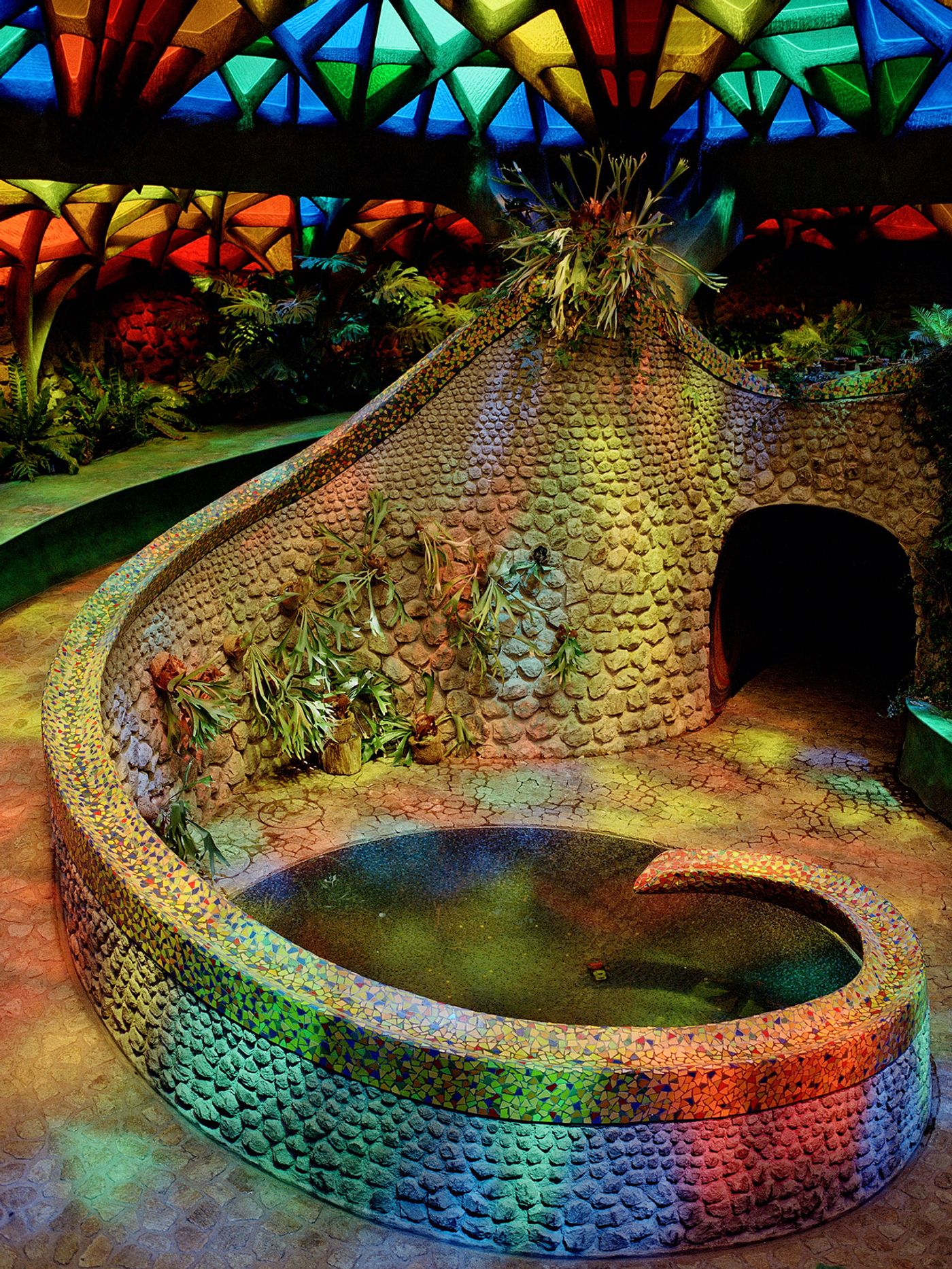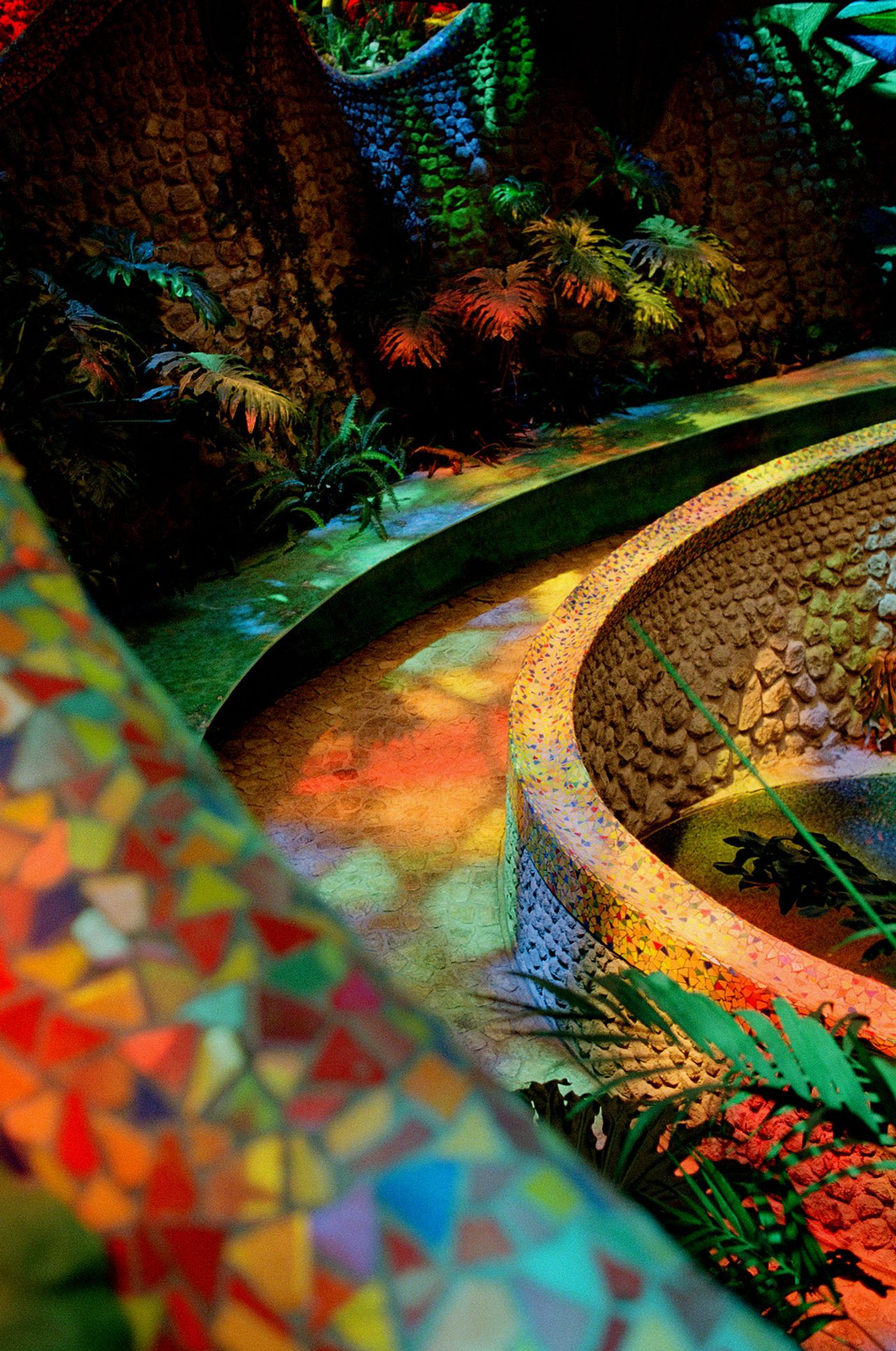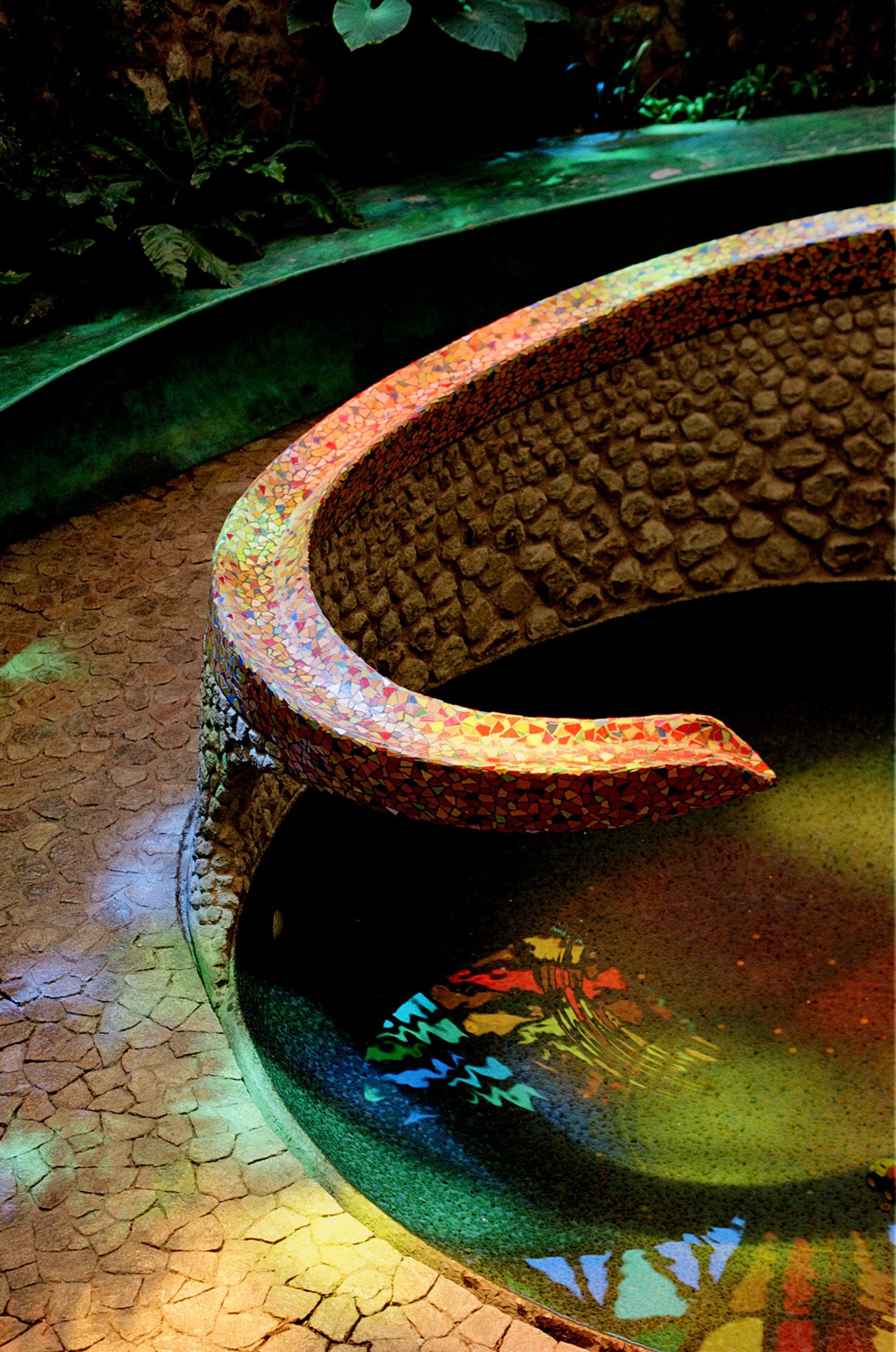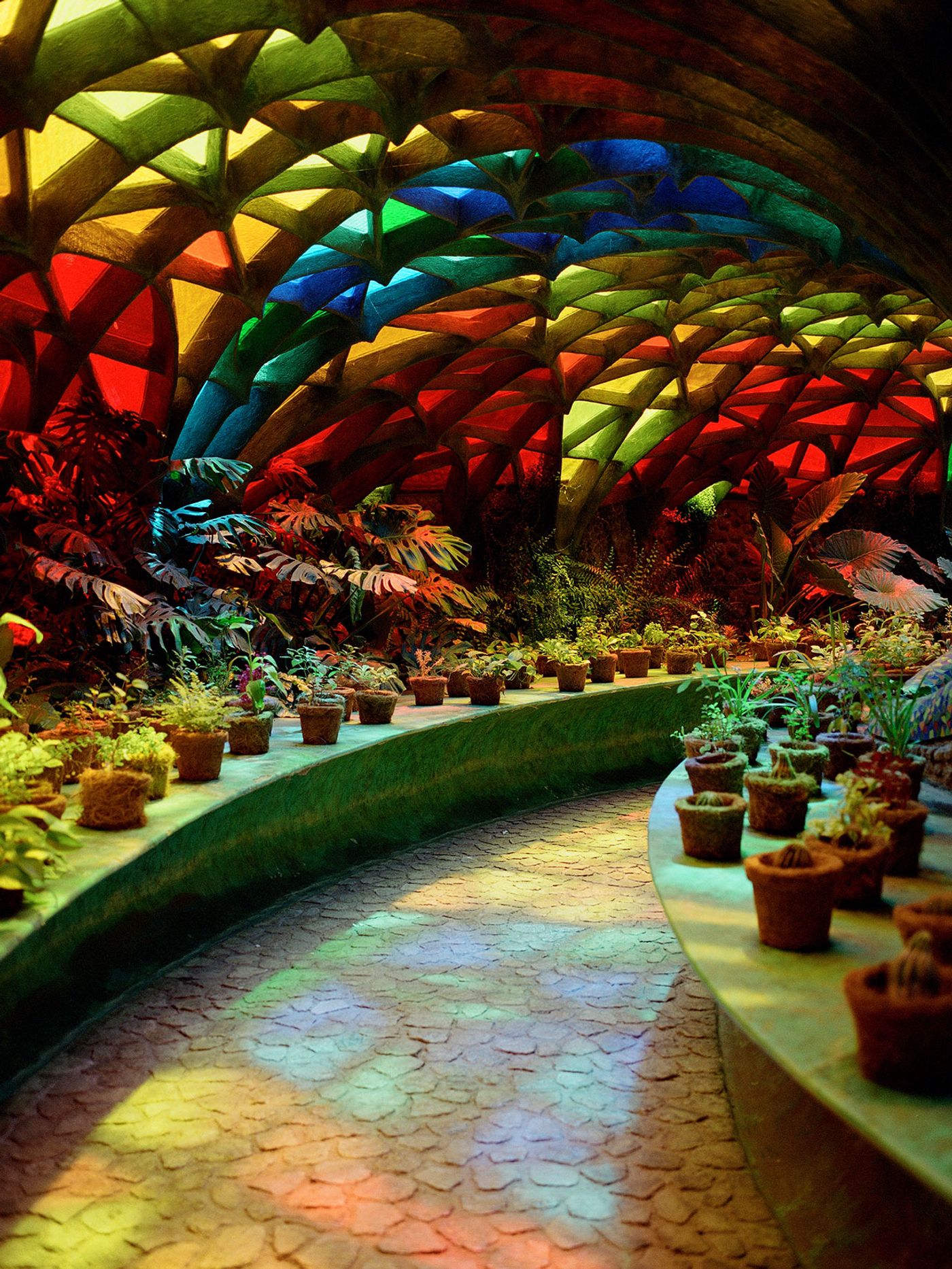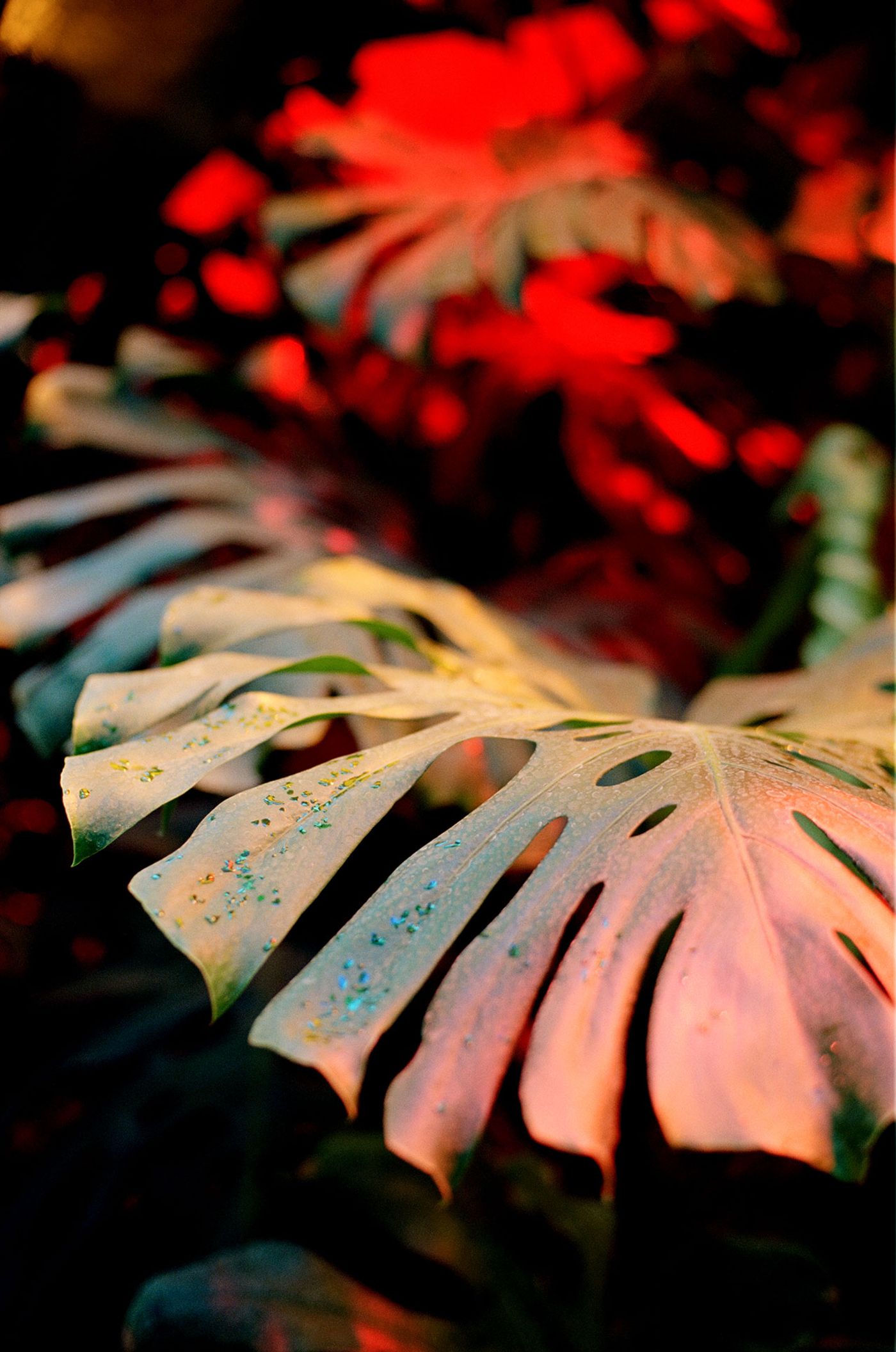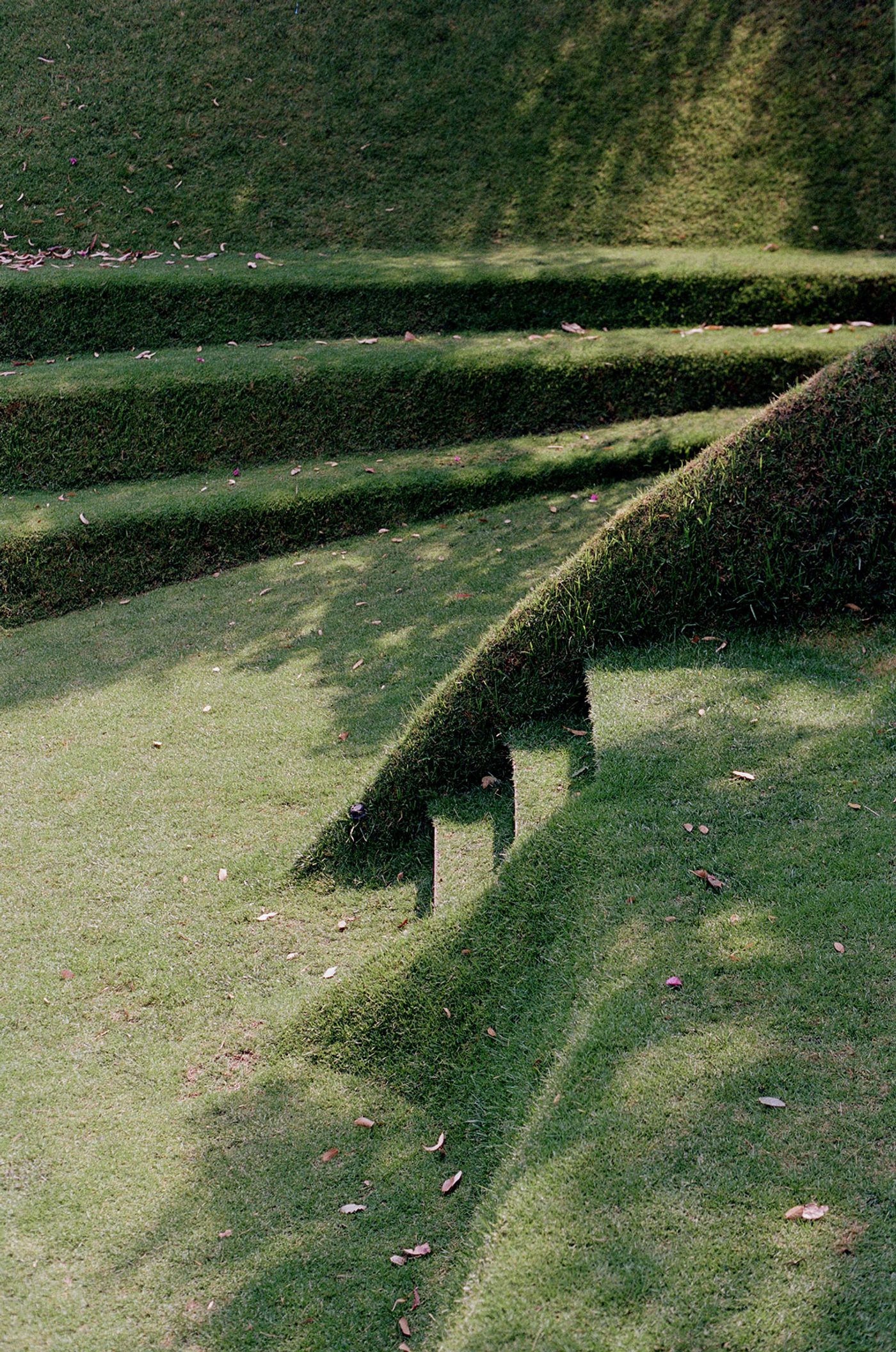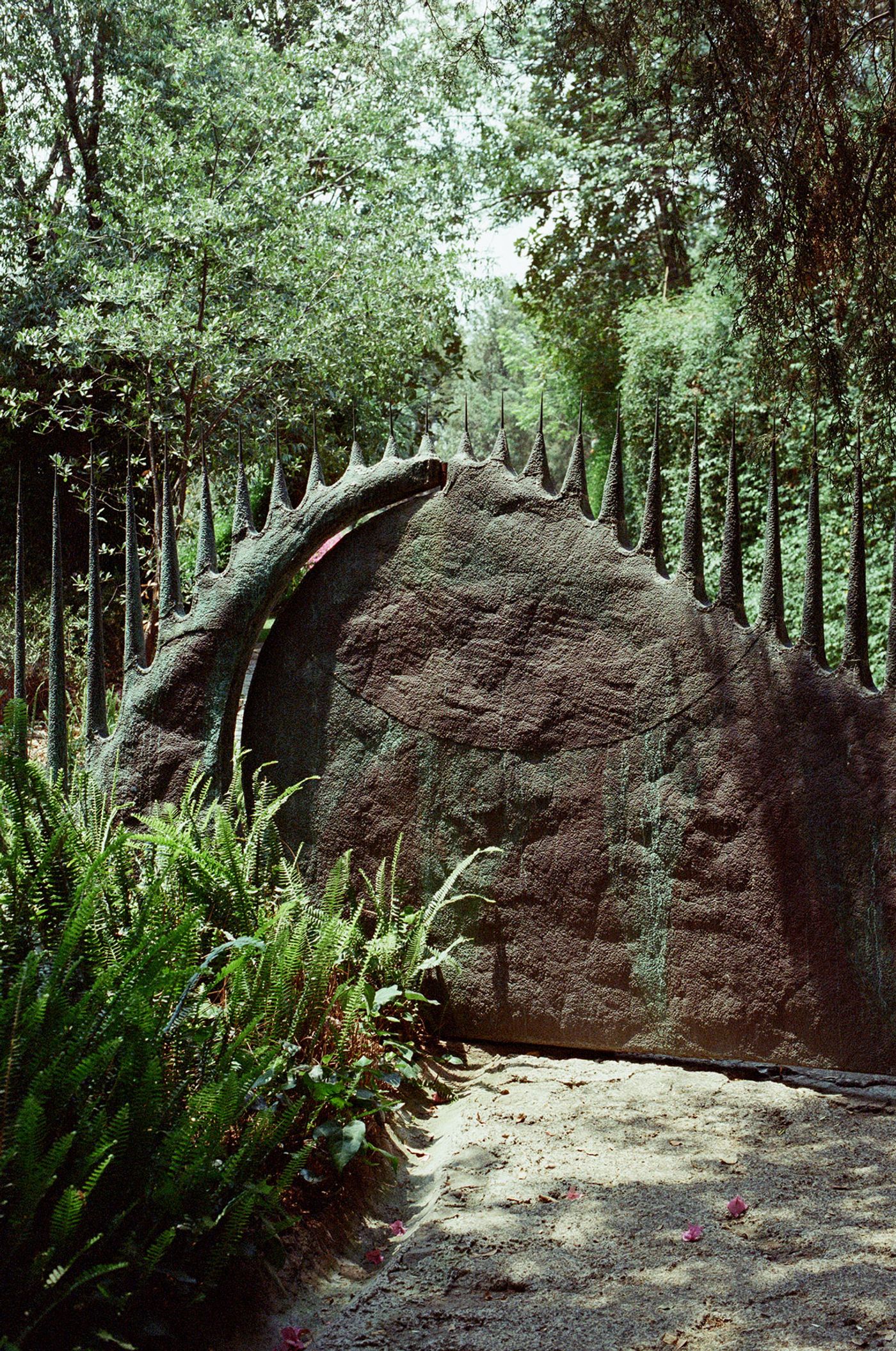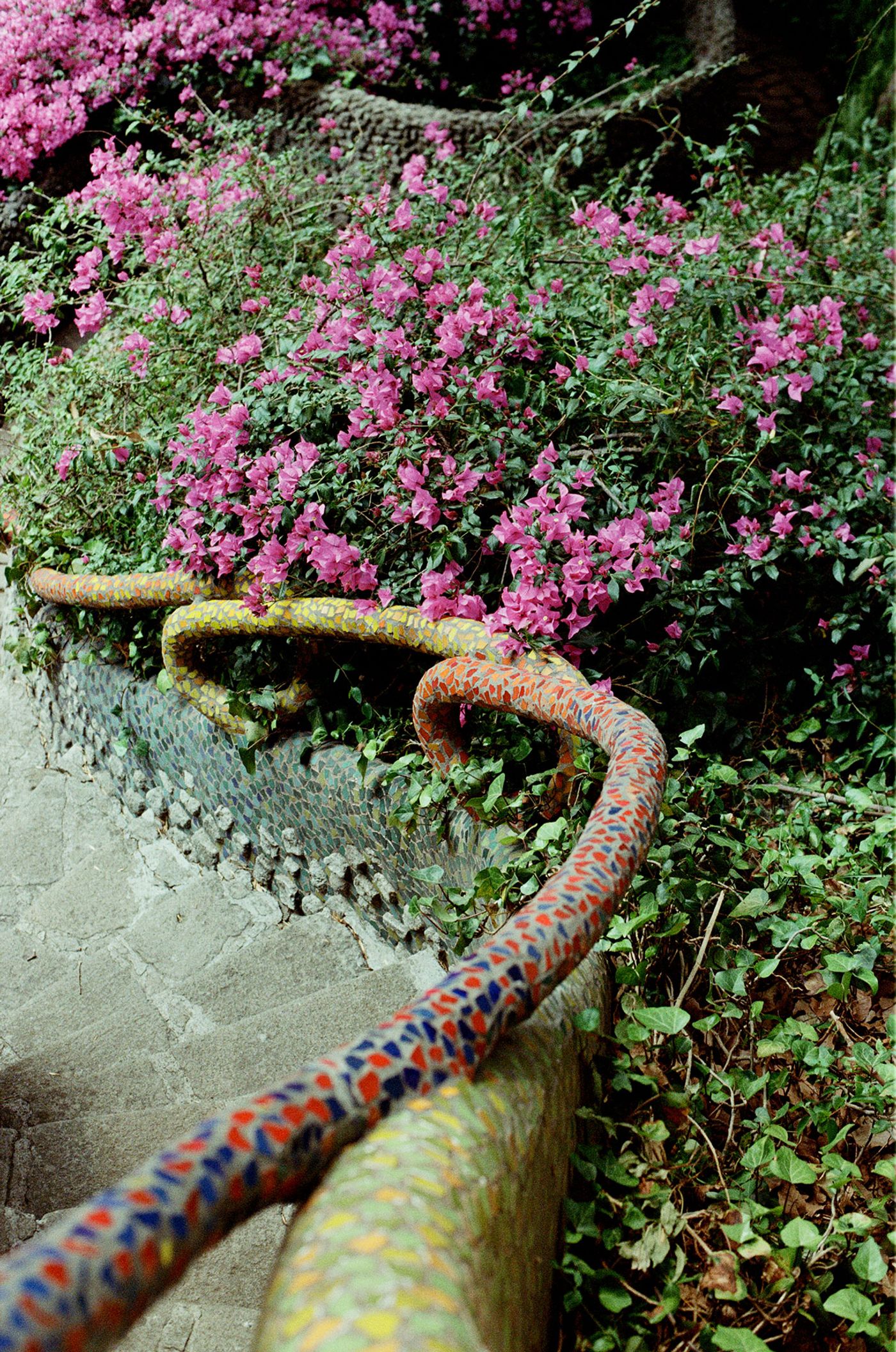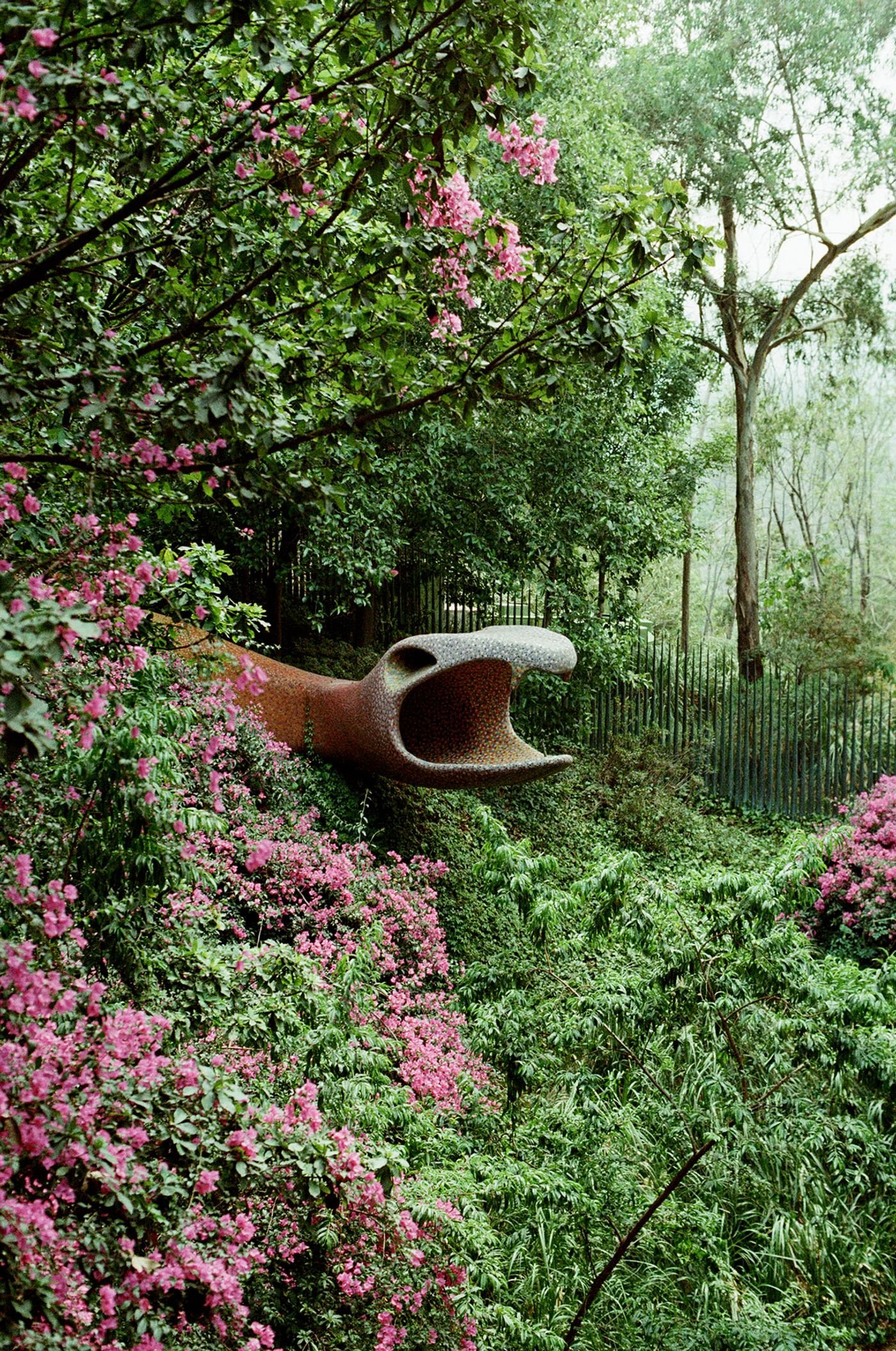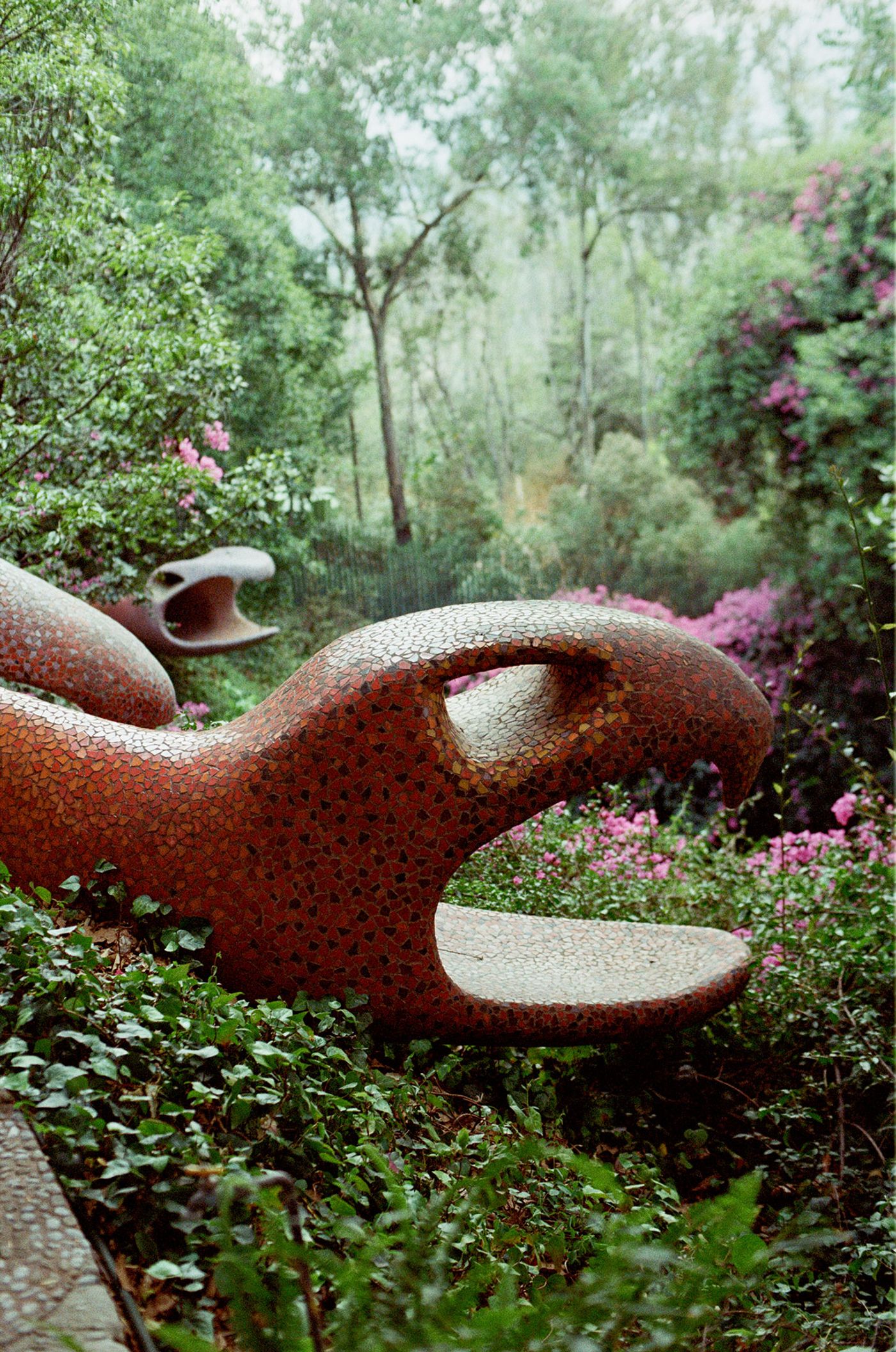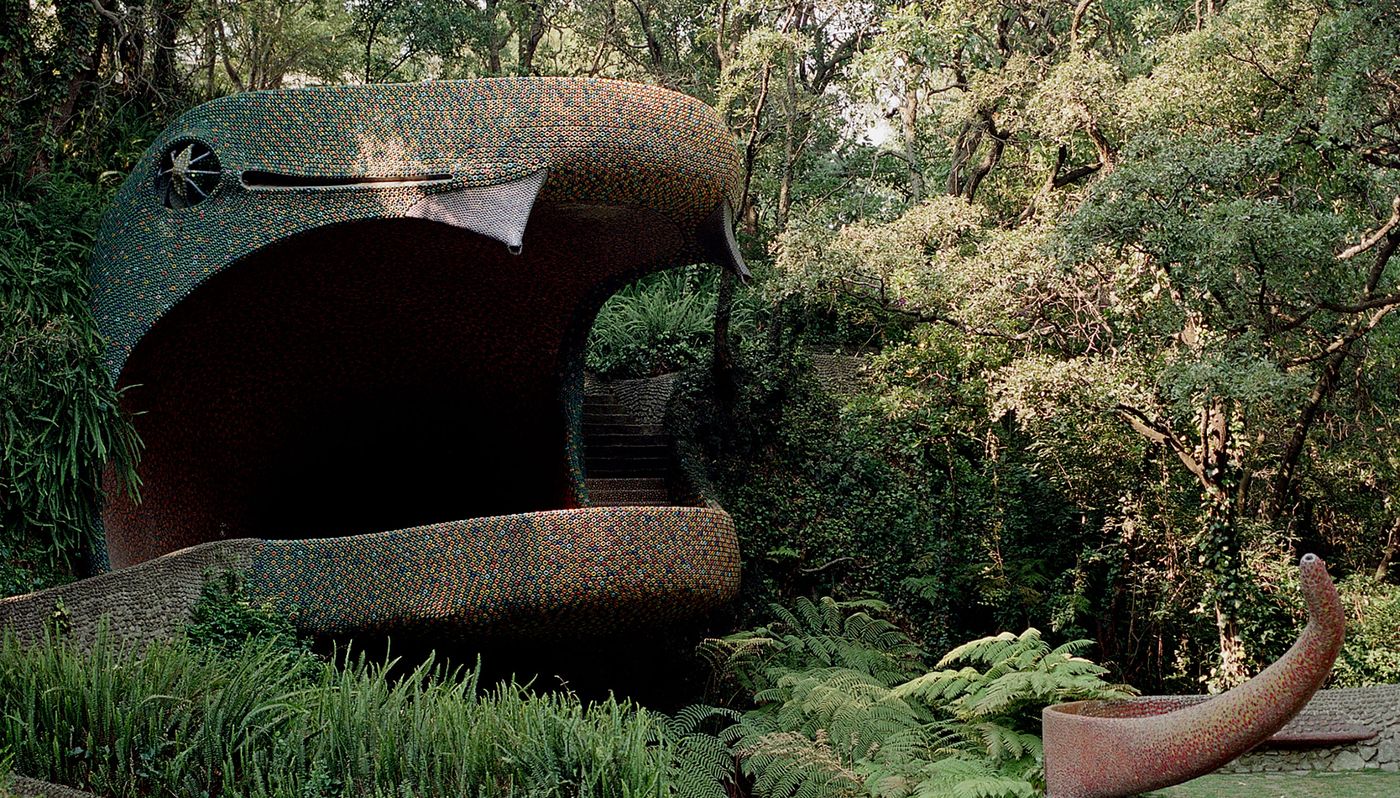
Javier Senosiain Mixes Organic Architecture with Aztec Mythology in a Serpent-Shaped Apartment Complex in Mexico
Words by Eric David
Location
Naucalpan de Juárez, Mexico
Javier Senosiain Mixes Organic Architecture with Aztec Mythology in a Serpent-Shaped Apartment Complex in Mexico
Words by Eric David
Naucalpan de Juárez, Mexico
Naucalpan de Juárez, Mexico
Location
Nestled in the outskirts of Naucalpan de Juárez, northeast of Mexico City, El Nido de Quetzalcóatl is a residential complex quite unlike any other. Designed by architect Javier Senosiain Aguilar in the shape of a colossal serpent, the iridescent structure twists and turns amid the lush gardens, winding streams and oak groves housing ten sparsely furnished rental apartments in its bowels. Drawing inspiration from the Aztec feathered snake god Quetzalcóatl, Senosiain designed a serpentine building harmoniously integrated into the natural landscape in line with the principles of organic architecture, a movement that he was one of the first architects in Mexico to develop in depth.
Completed in 2007 after six years in the making, El Nido de Quetzalcóatl, which translates as the nest of Quetzalcóatl, looks to nature and mythology for a forward-looking way of living, its surreal sensibility belying a profoundly ecological consciousness, as does the adjacent Parque Quetzalcóatl, an ongoing project not yet open to the public envisioned as an ecological park exuberantly designed in the footsteps of Gauidi’s Park Güell in Barcelona and Niki de Saint Phalle’s Tarot Garden in Tuscany.
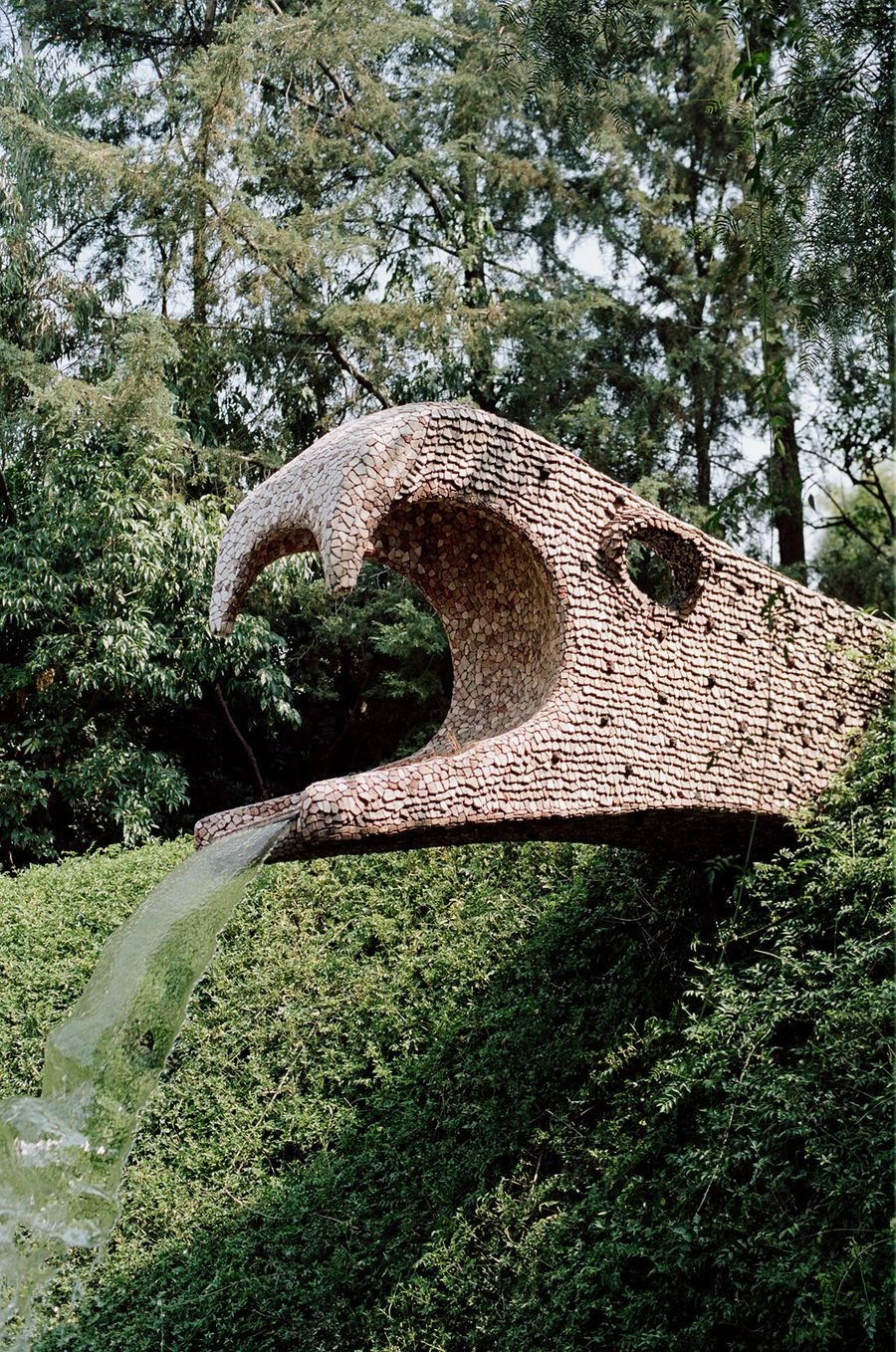
Photography by Anna Dave.
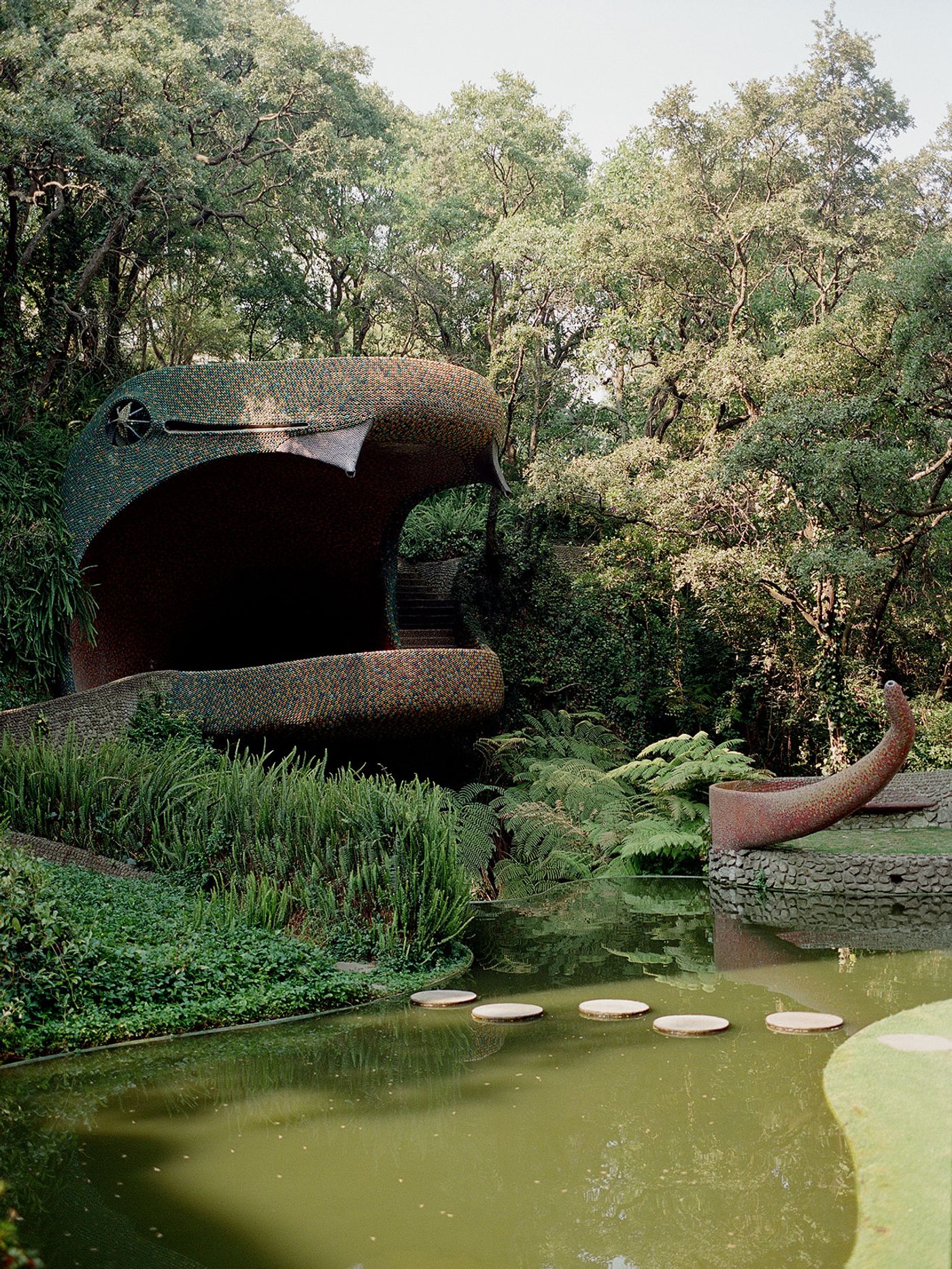
Photography by Anna Dave.
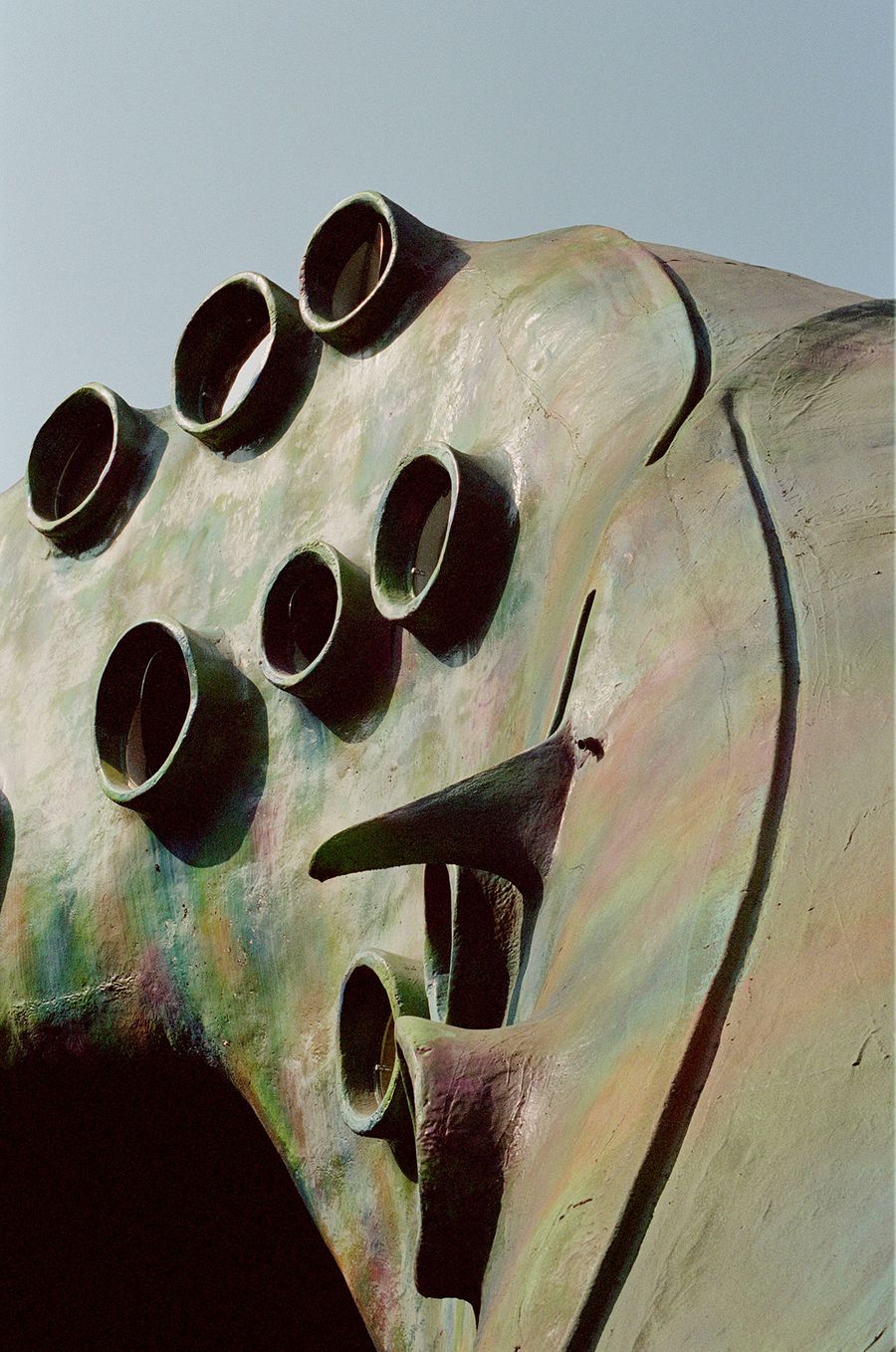
Photography by Anna Dave.
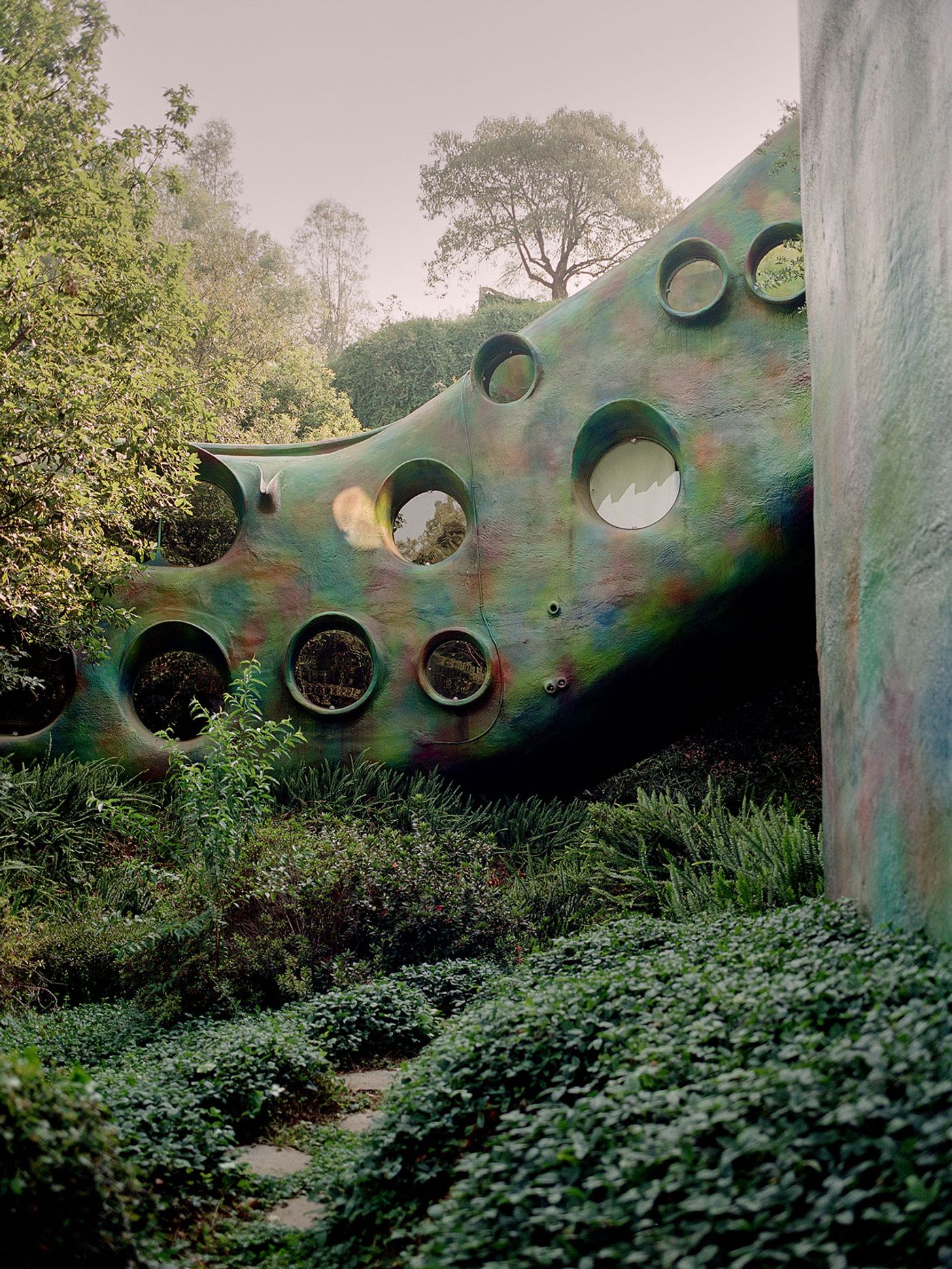
Photography by Anna Dave.
Senosiain’s passion for organic architecture is interconnected with his environmental sensitivity – more than a mere design language of organic forms, the philosophy of organic architecture draws inspiration from nature in order to minimise the ecological footprint created by manmade buildings. “It’s a philosophy of architecture that seeks or promotes harmony between the habitat of man and the natural world,” Senosiain says. Viewed through this lens, El Nido de Quetzalcóatl is no architectural folly or surrealist extravaganza, but rather an example of environmental idealism - the otherworldly, serpentine building may have been inspired by a mythological deity but its undulating volume is a response to the uneven terrain, thoughtfully designed to have a minimal ecological footprint. The result is a massive structure housing ten 200-square-metre dwellings that nevertheless leaves the surrounding natural landscape almost untouched.
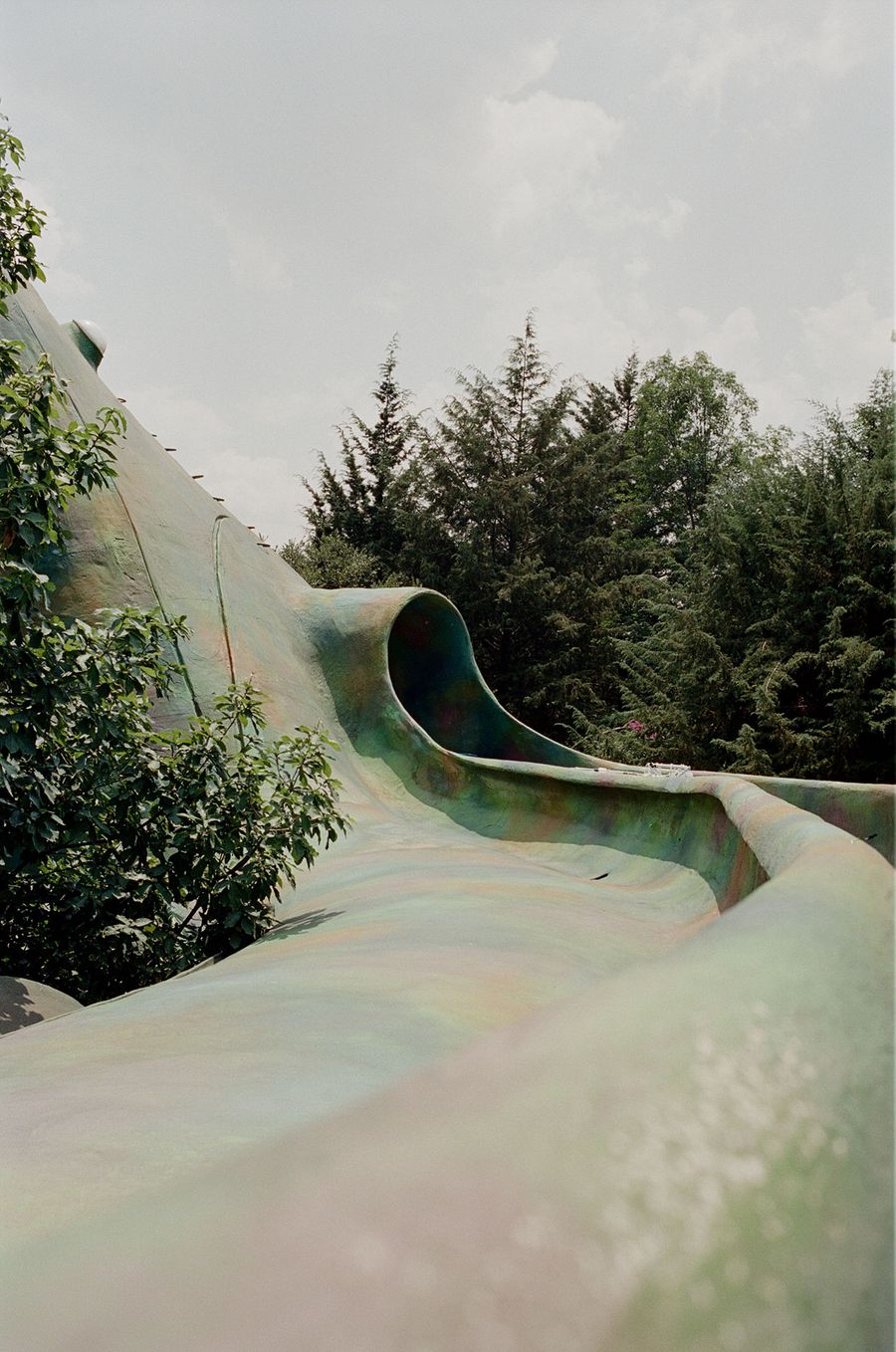
Photography by Anna Dave.
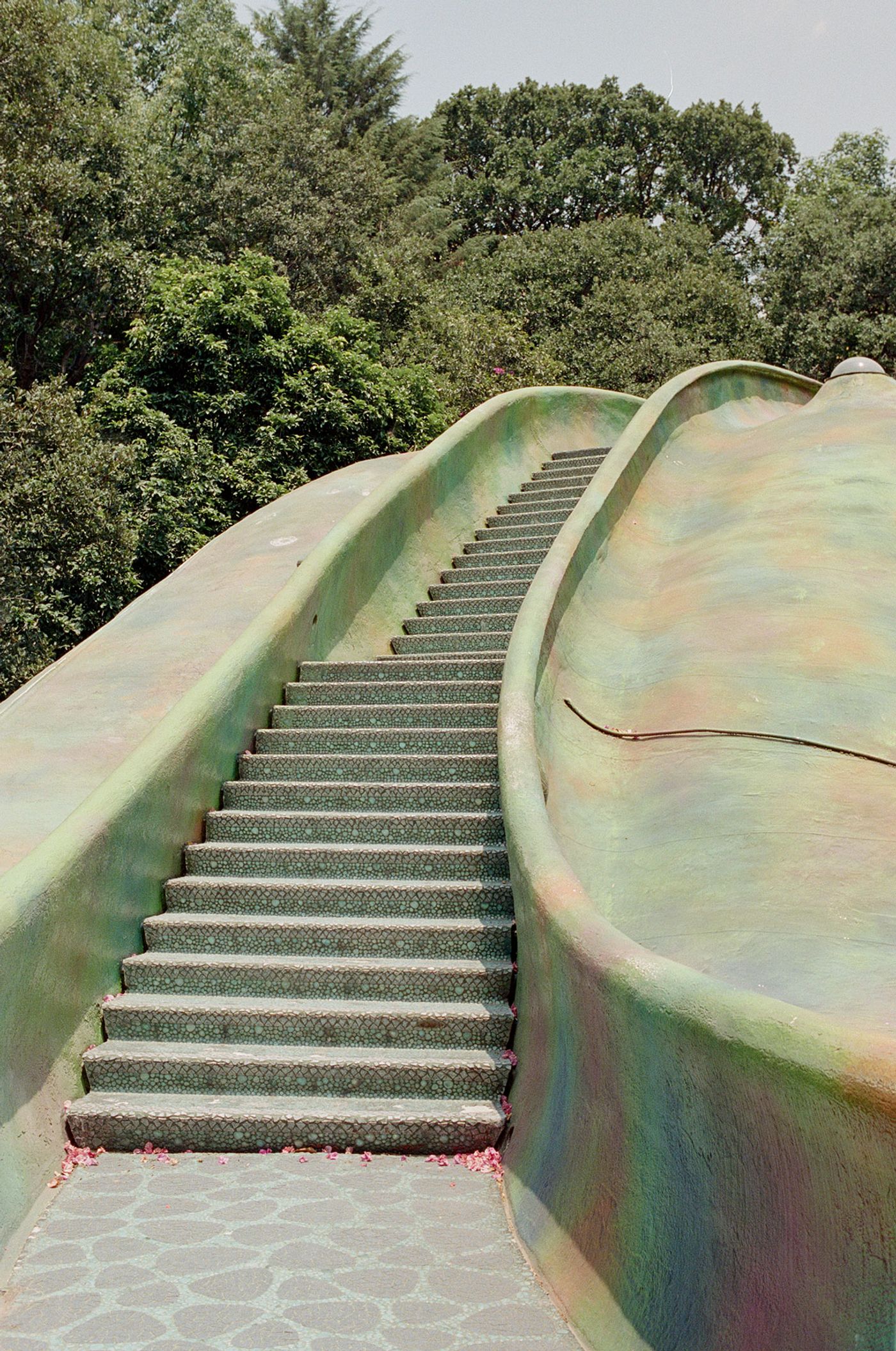
Photography by Anna Dave.
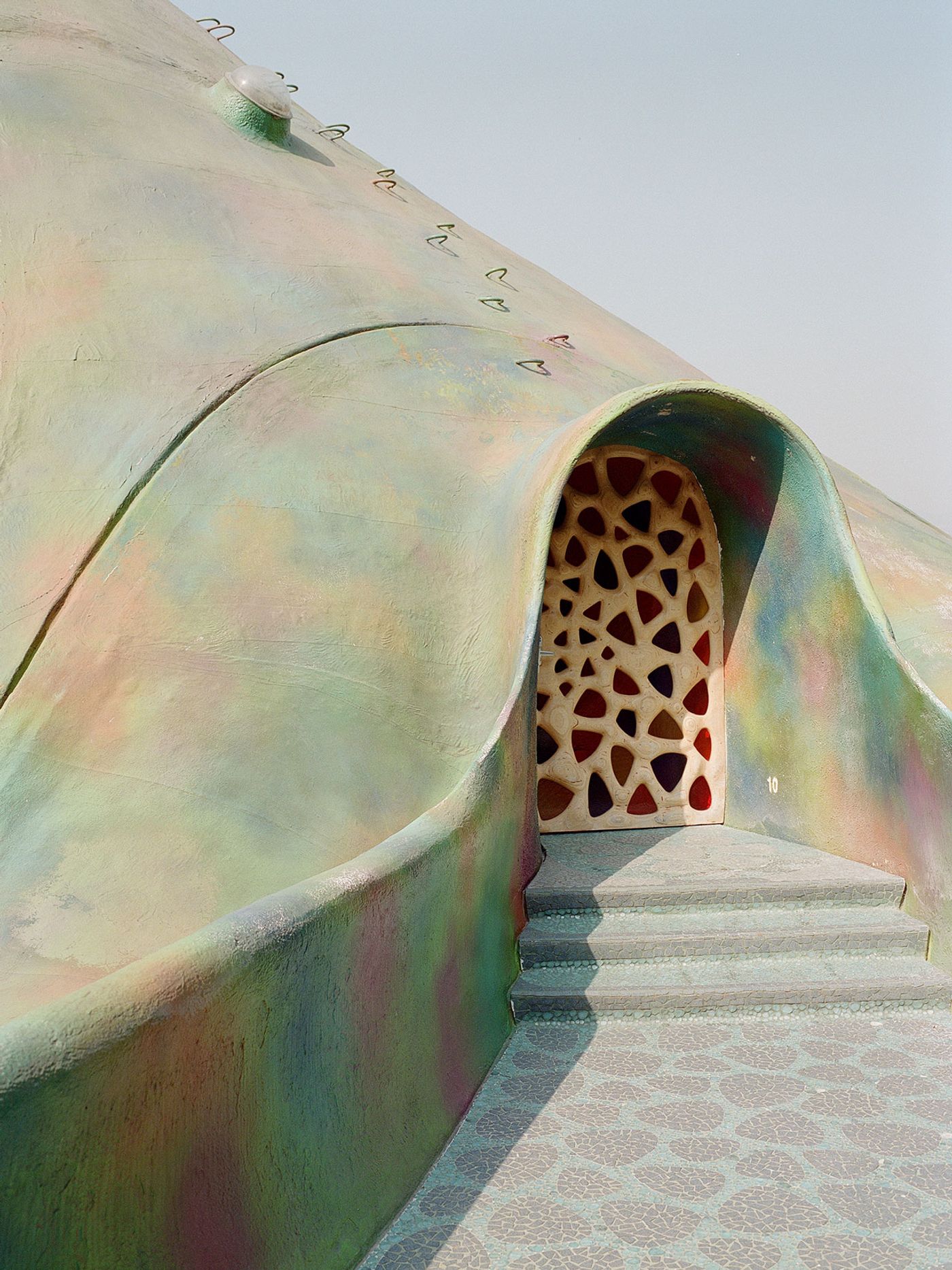
Photography by Anna Dave.
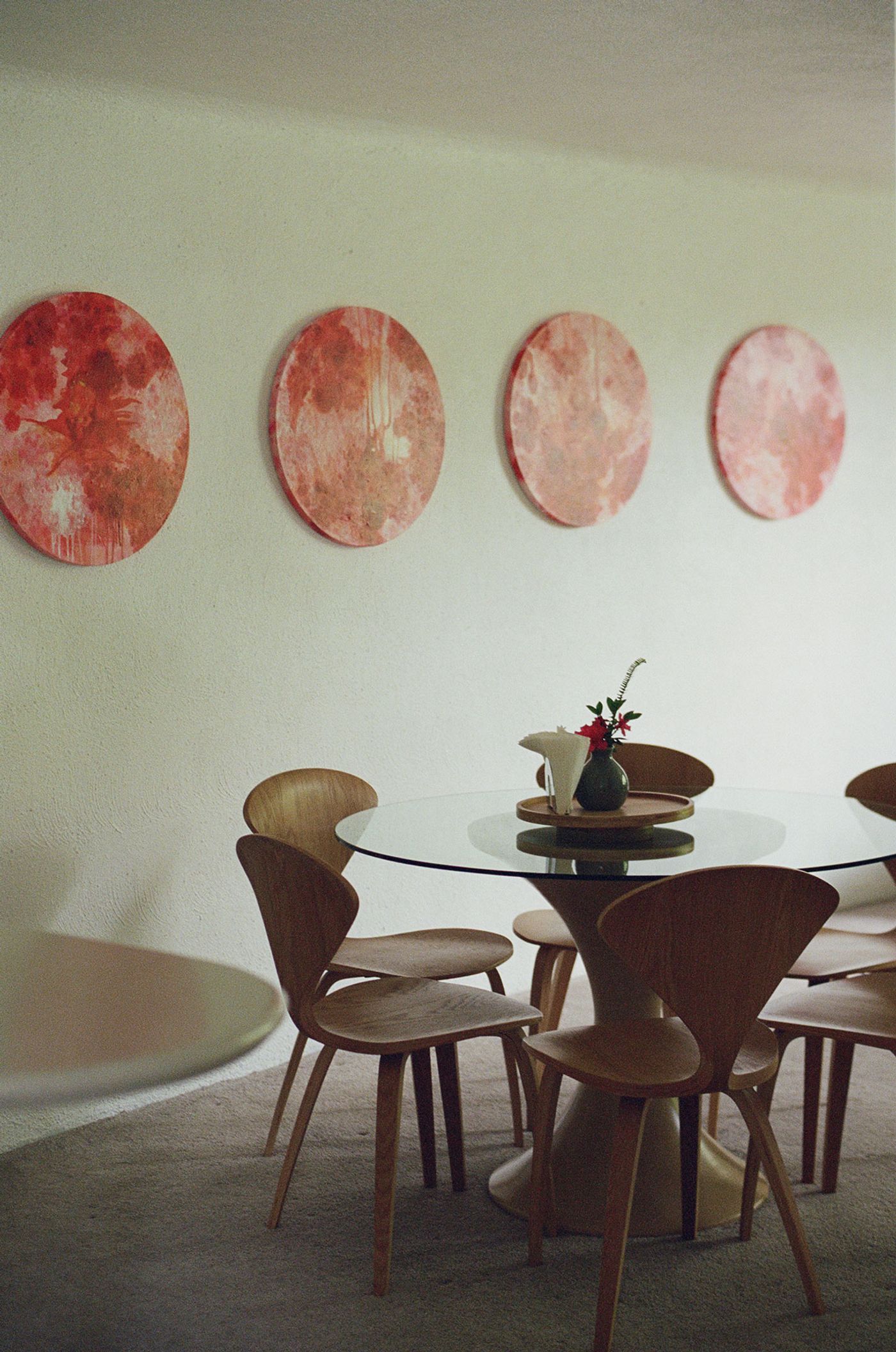
Photography by Anna Dave.

Photography by Anna Dave.
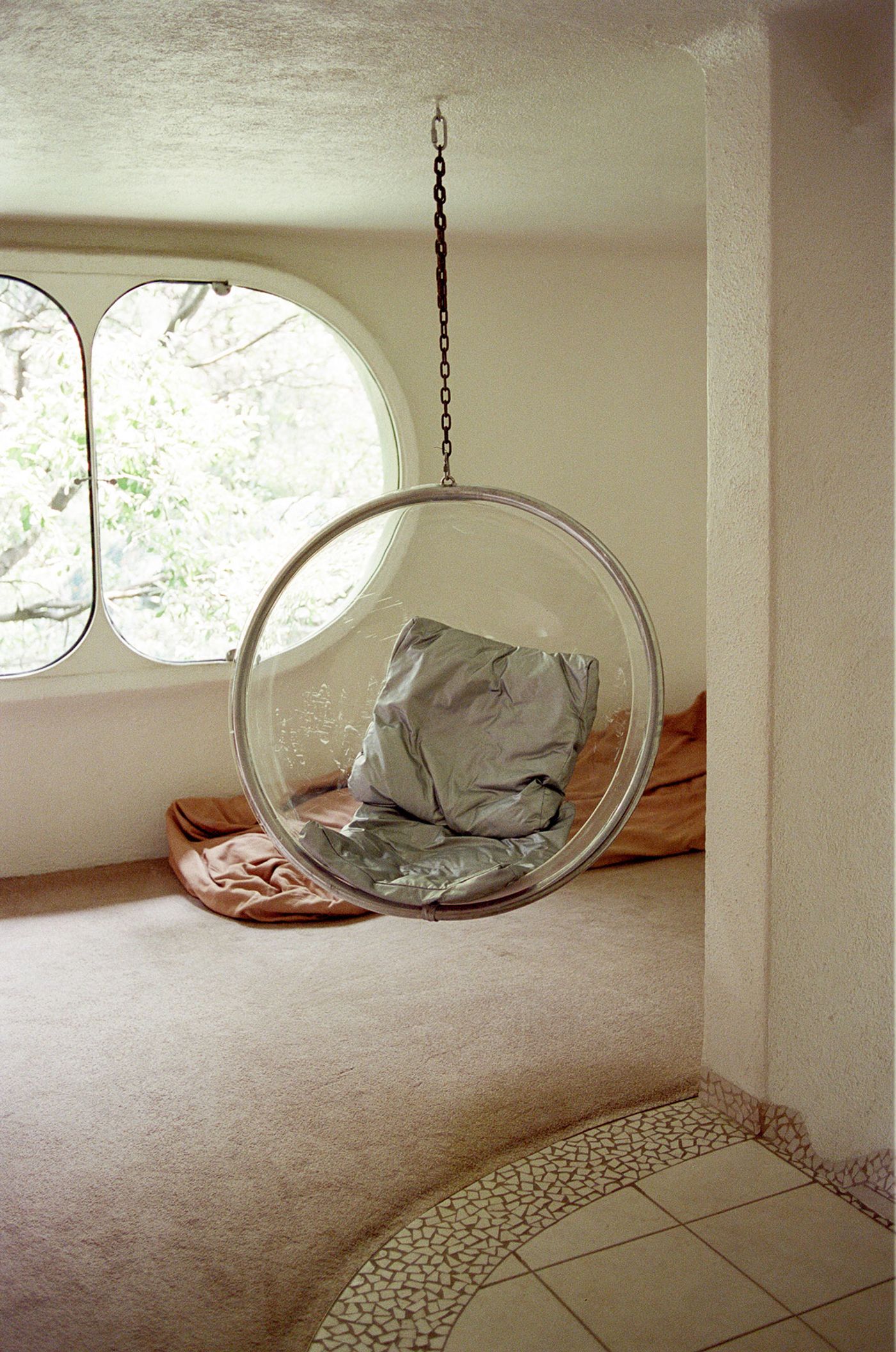
Photography by Anna Dave.
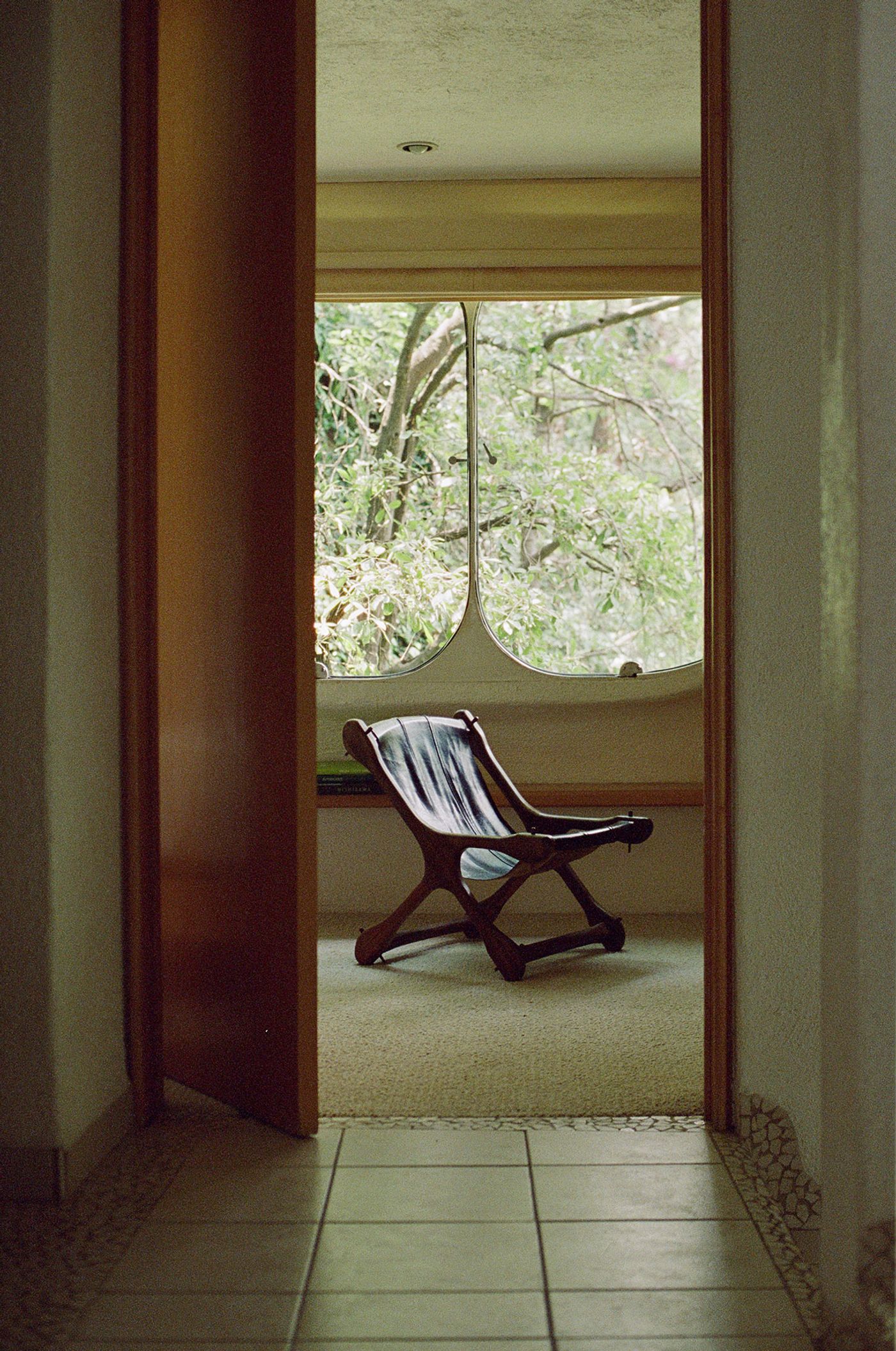
Photography by Anna Dave.
Constructed out of ferrocement, the building’s organic sense and sculptural sensibility is enhanced by the irregular composition of smaller and larger circular windows, and an iridescent colour, a mix of golden-green and violet-blue inspired by the plumage of the quetzal, an indigenous bird which the ancient god Quetzalcóatl takes his name from (coatl means serpent in the Atzec language). Entering through the serpent’s back, the ten apartments are connected through a series of corridors, staircases and bridges, while the serpent’s gawking mouth, clad in scale-like mosaic tiles, functions as an entrance to one of the natural caves that punctuate the area.
With no straight line in sight - Senosiain believes that “the right angle is an invention of man” – and with that being said, the building’s curvaceous, womb-like interiors don’t fail to impress in their playful unconventionality, albeit without overwhelming their occupants thanks to a muted colour palette of cream and beige hues, sparse furnishings and minimal decorations. Natural materials like stone and wood make for a natural fit to the organic architecture with predominantly handcrafted finishes further adding to the project’s bespoke soulfulness.
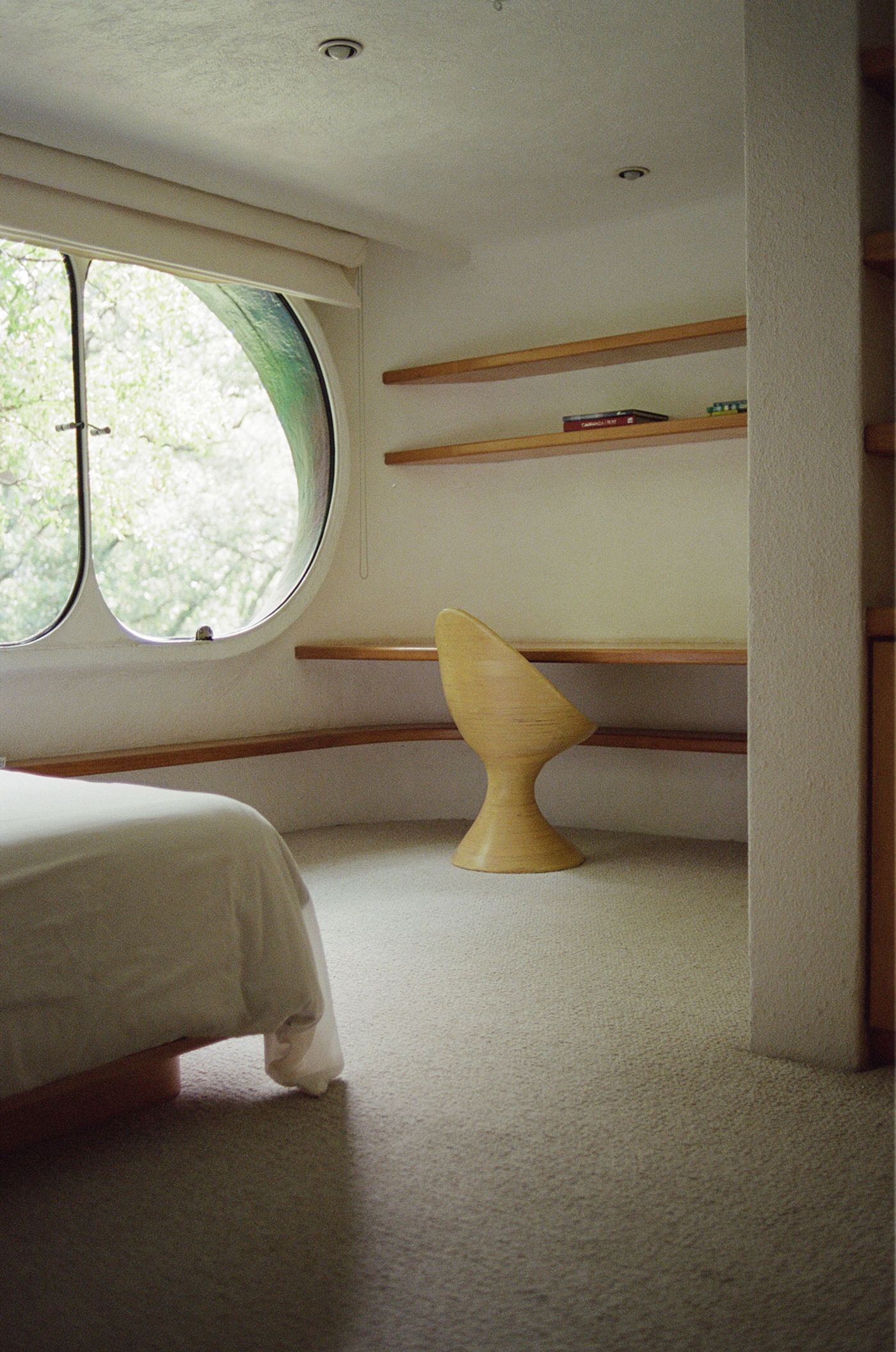
Photography by Anna Dave.
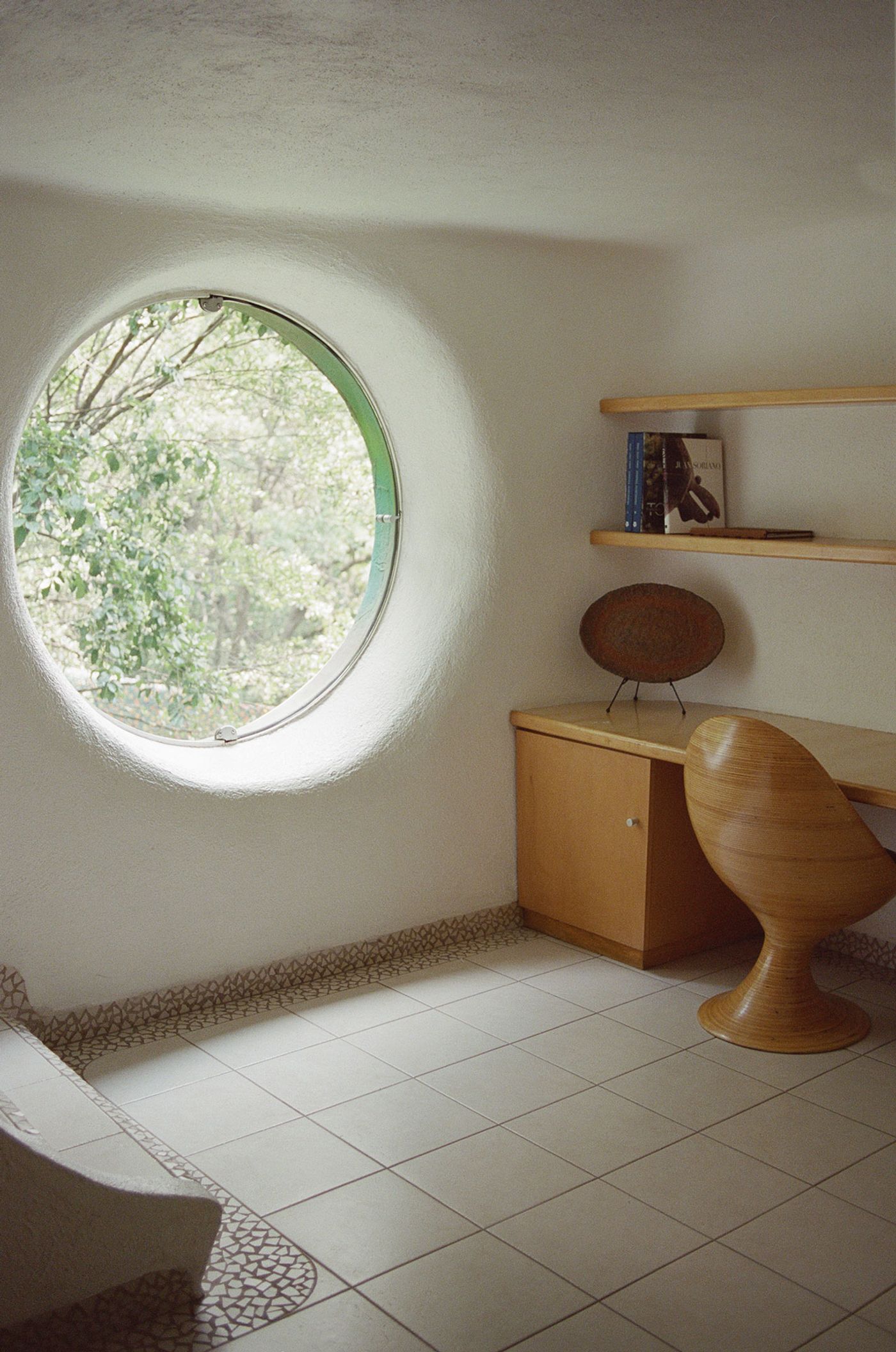
Photography by Anna Dave.
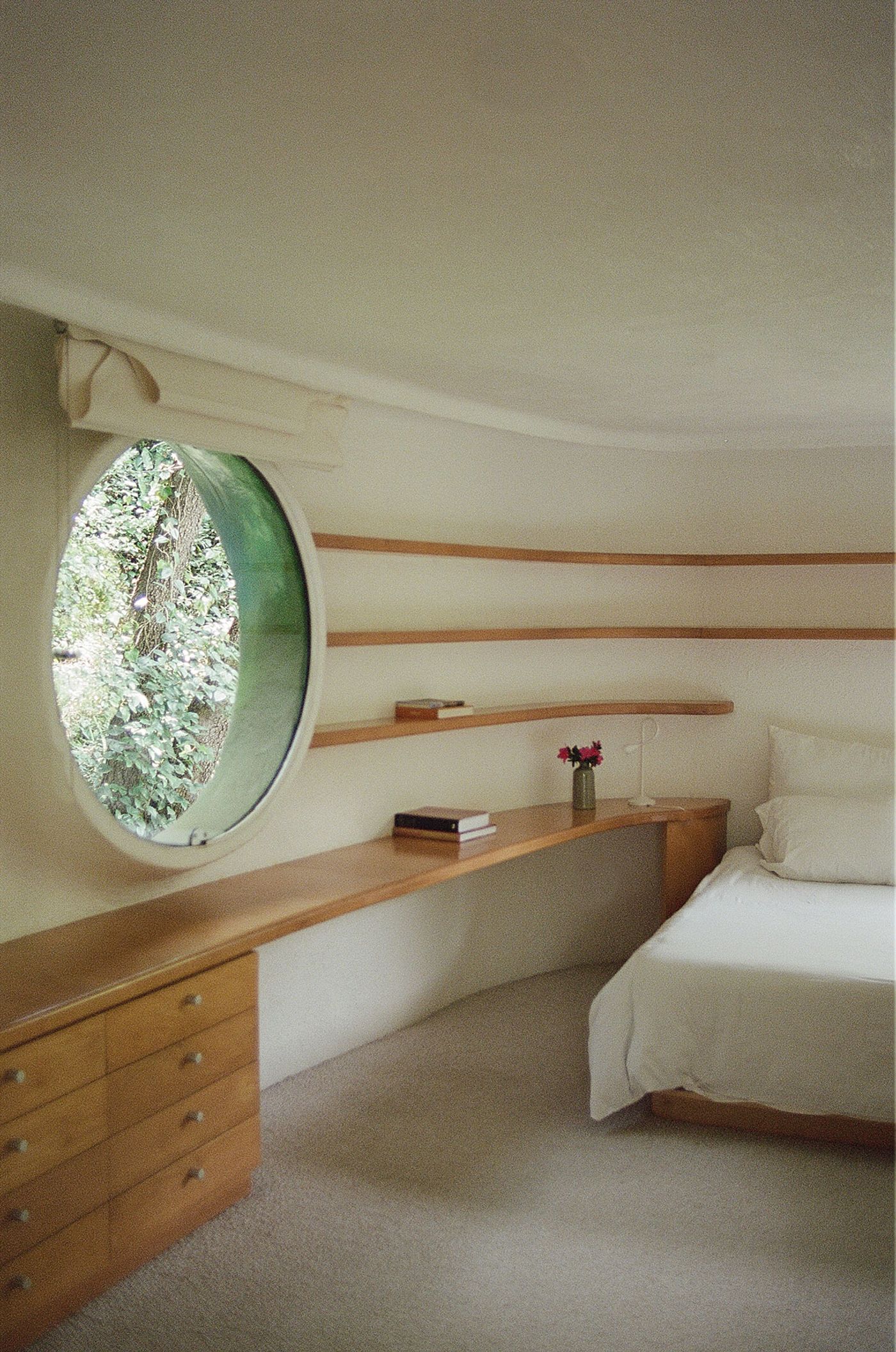
Photography by Anna Dave.
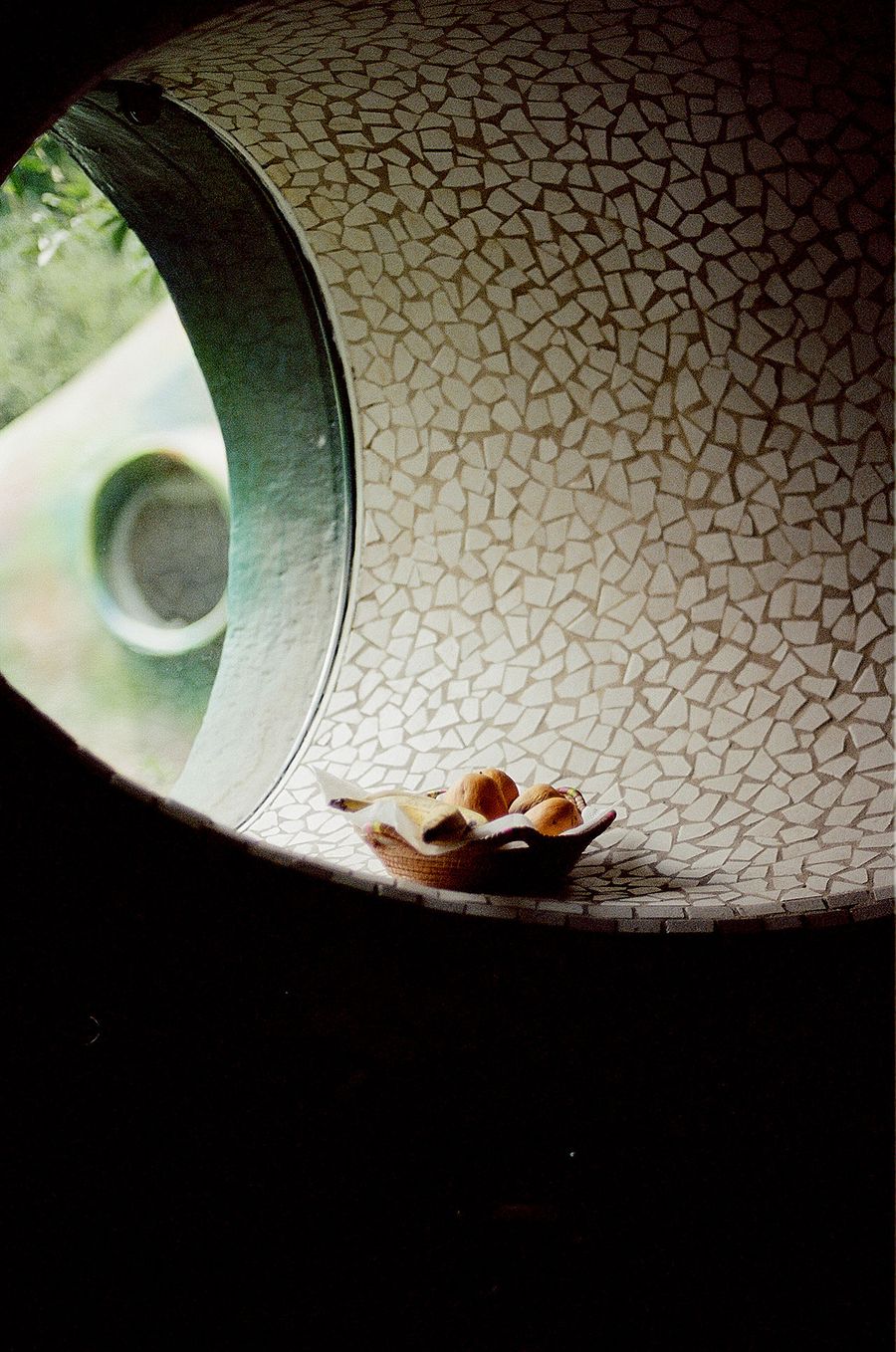
Photography by Anna Dave.
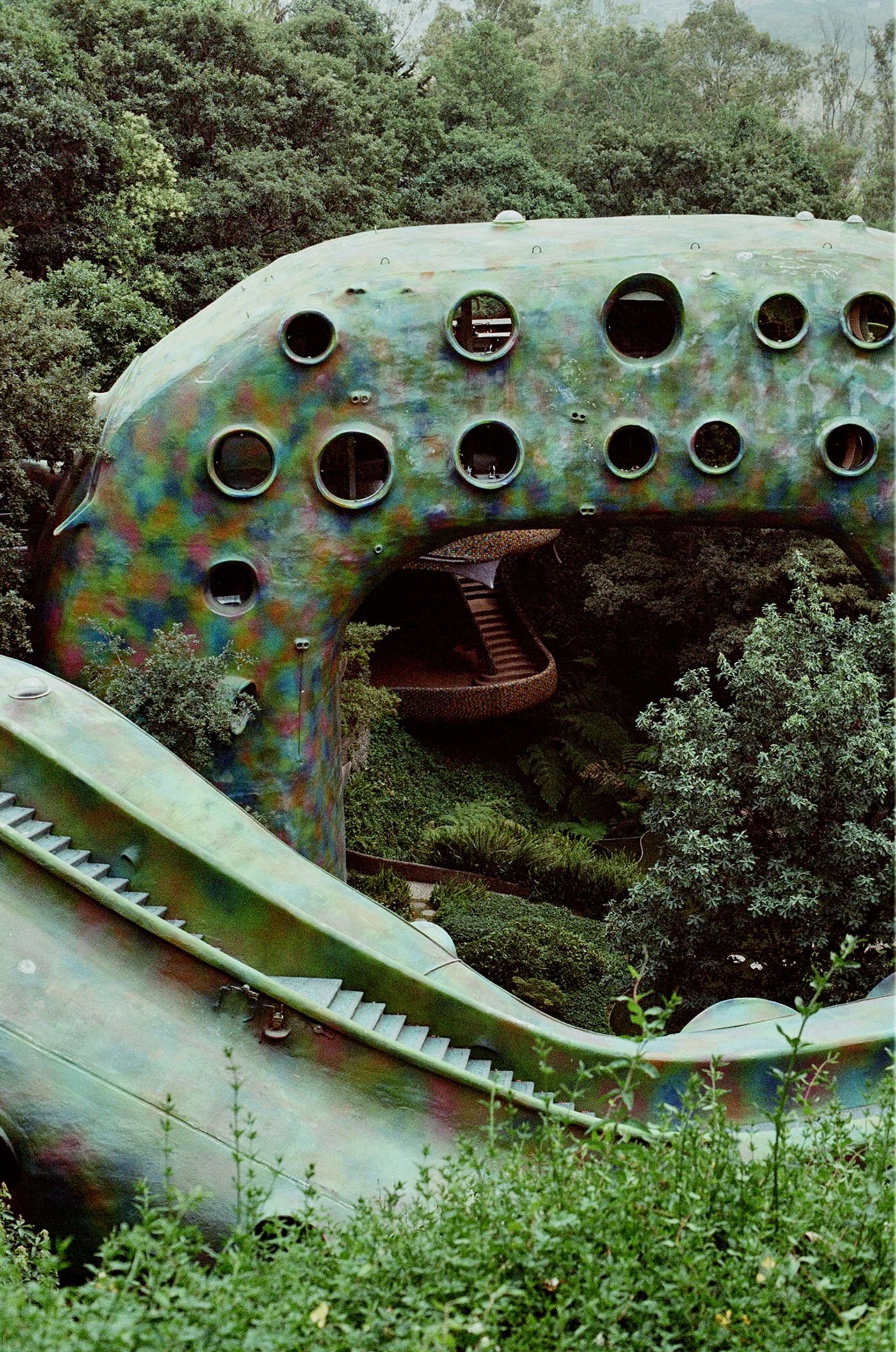
Photography by Anna Dave.
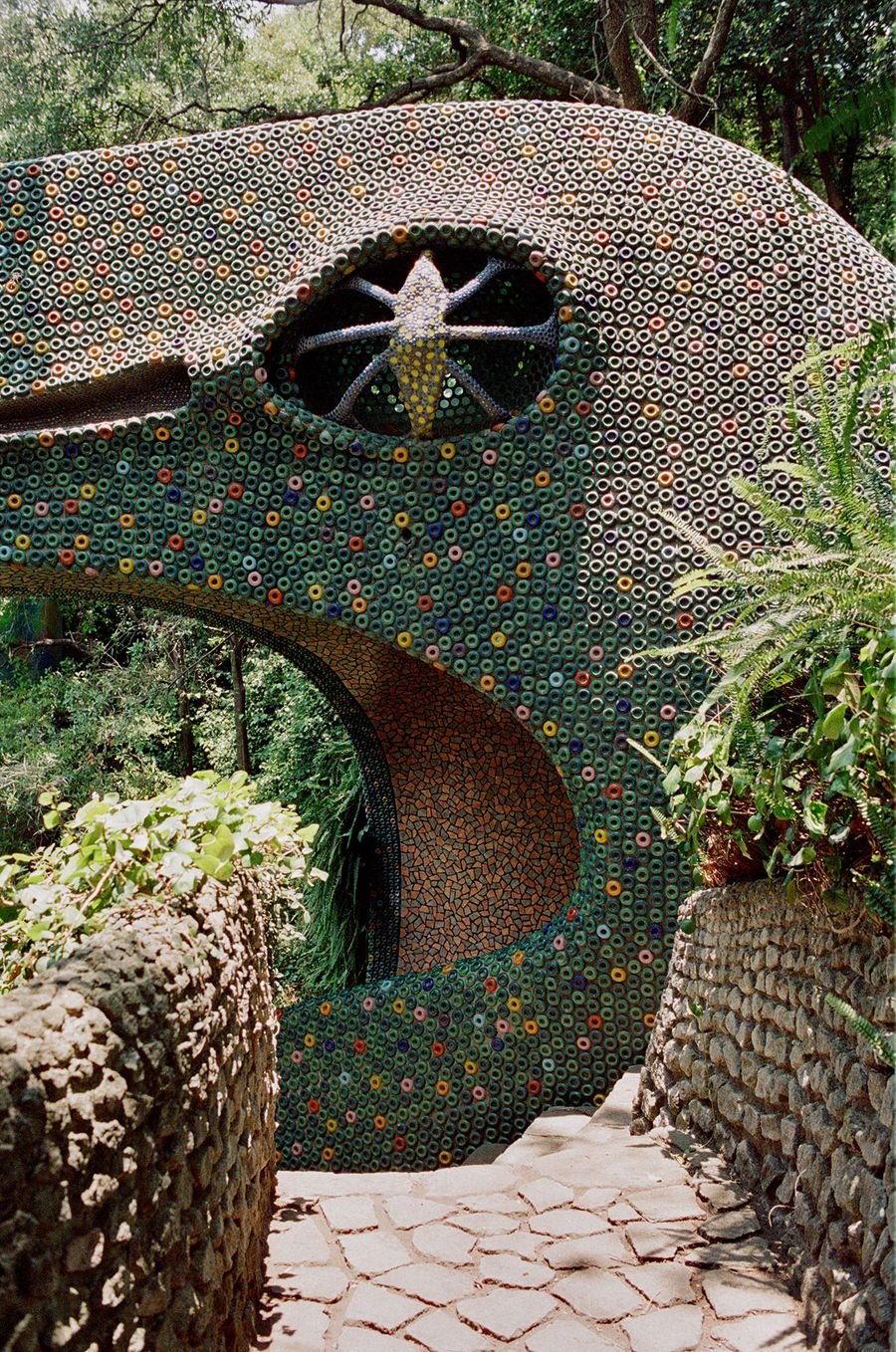
Photography by Anna Dave.
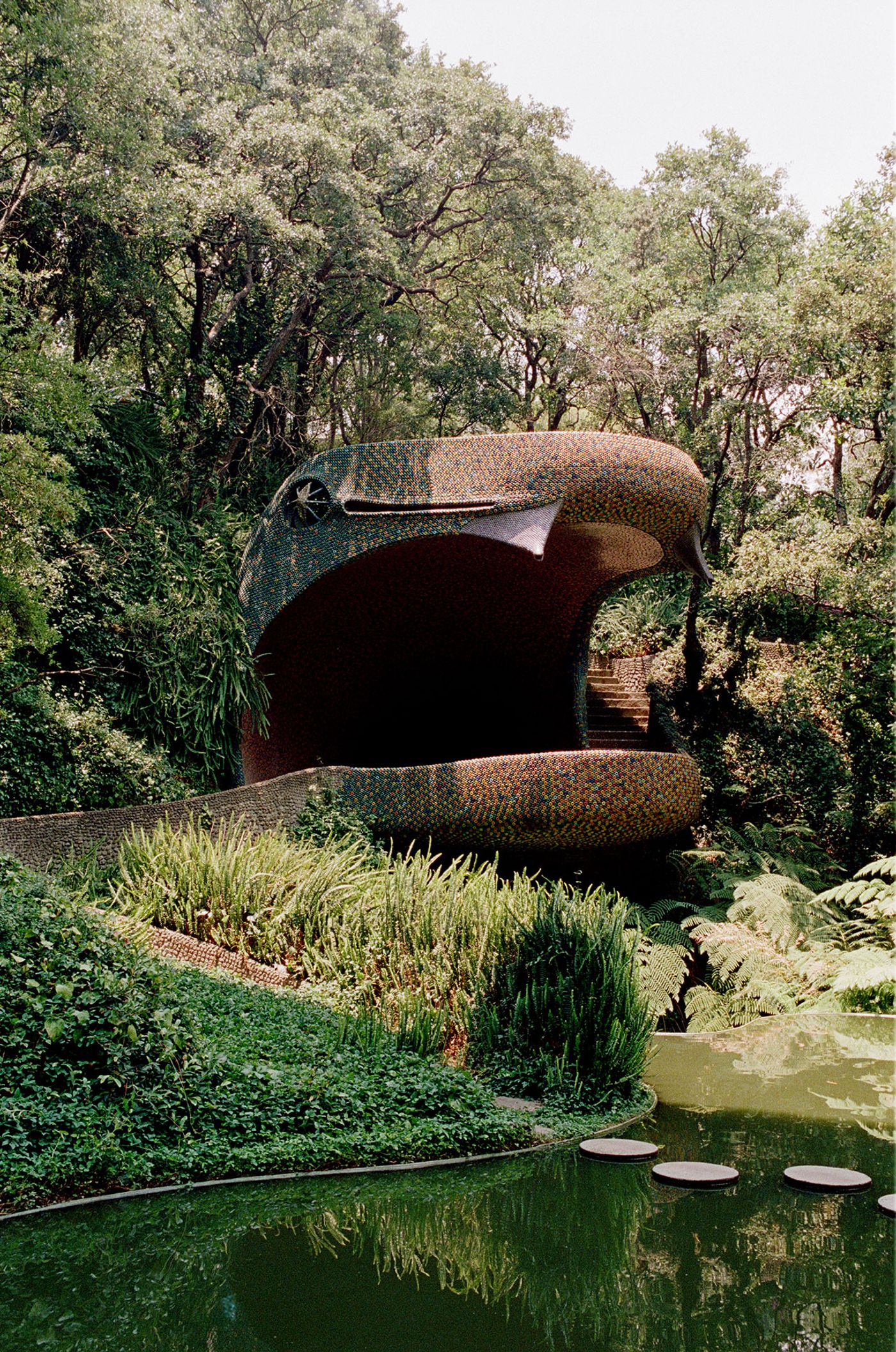
Photography by Anna Dave.
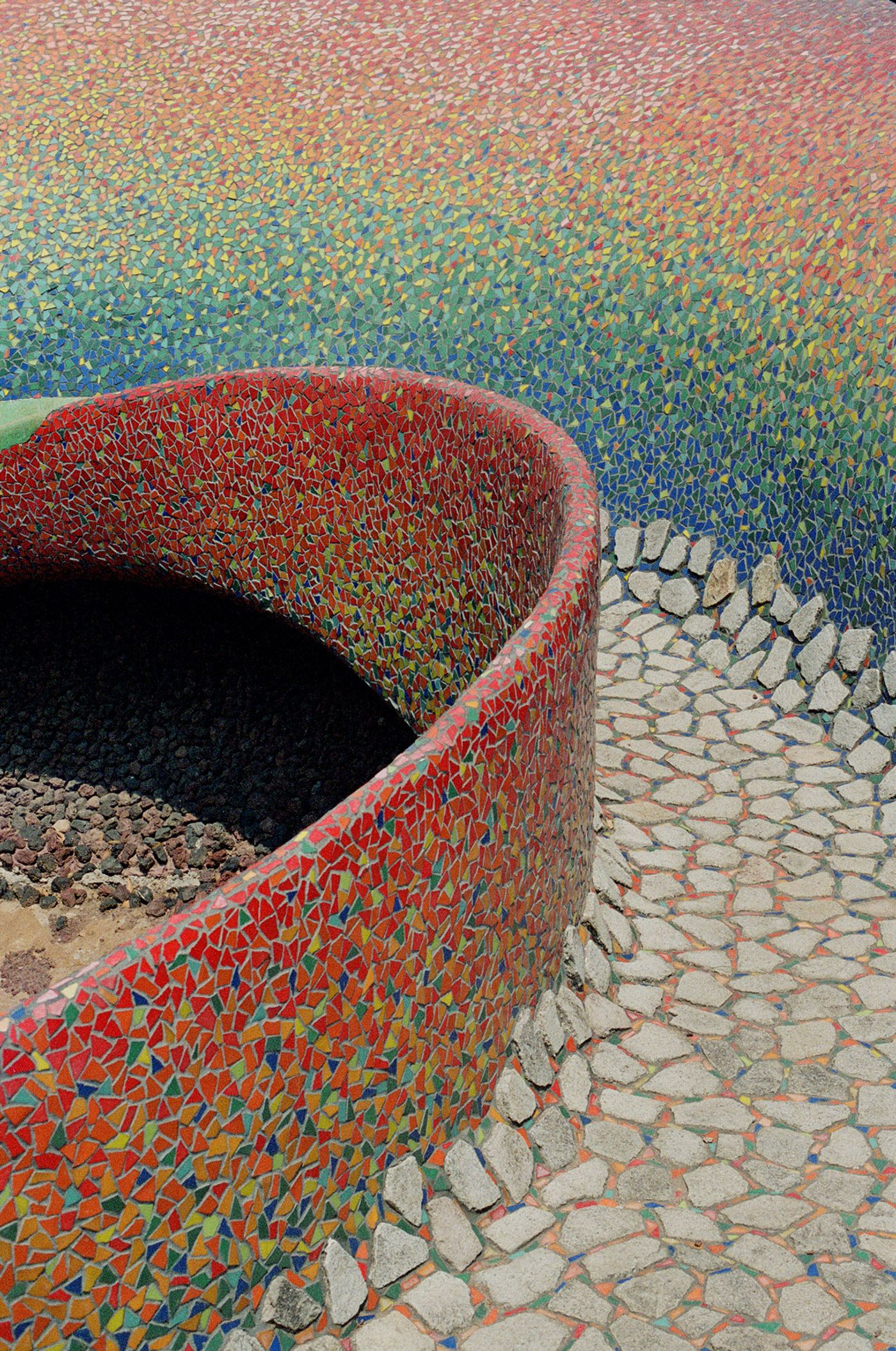
Photography by Anna Dave.
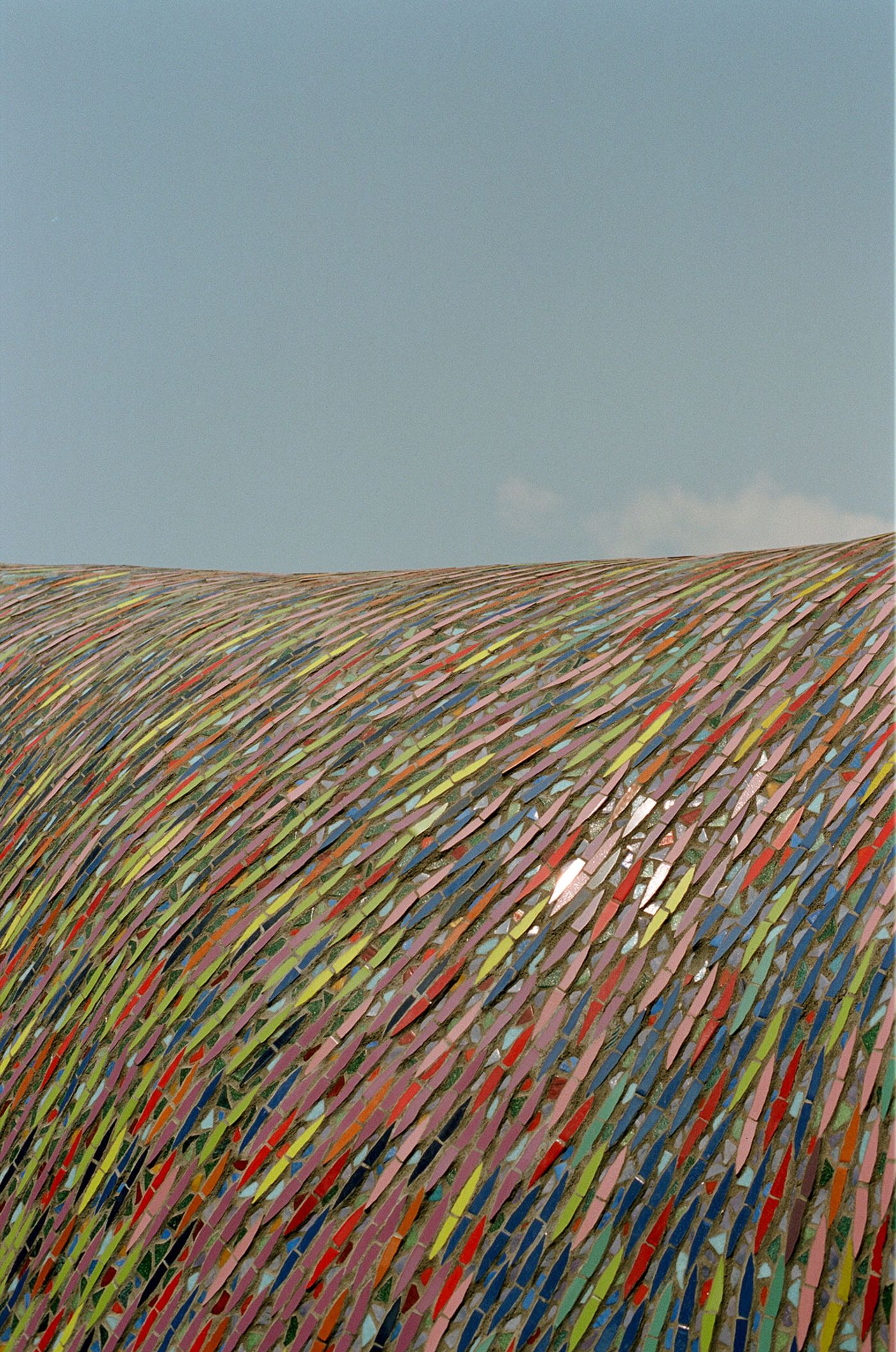
Photography by Anna Dave.
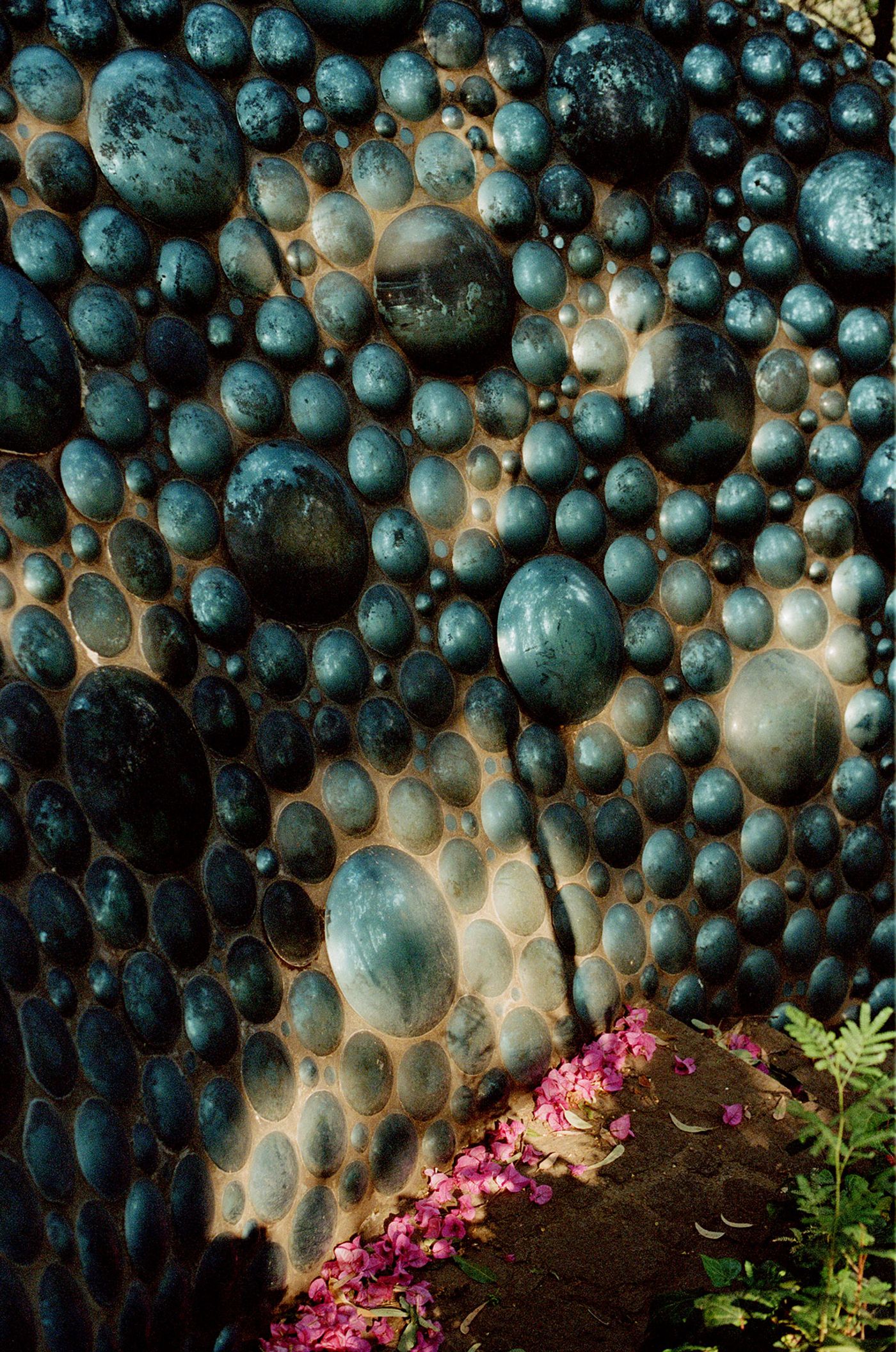
Photography by Anna Dave.
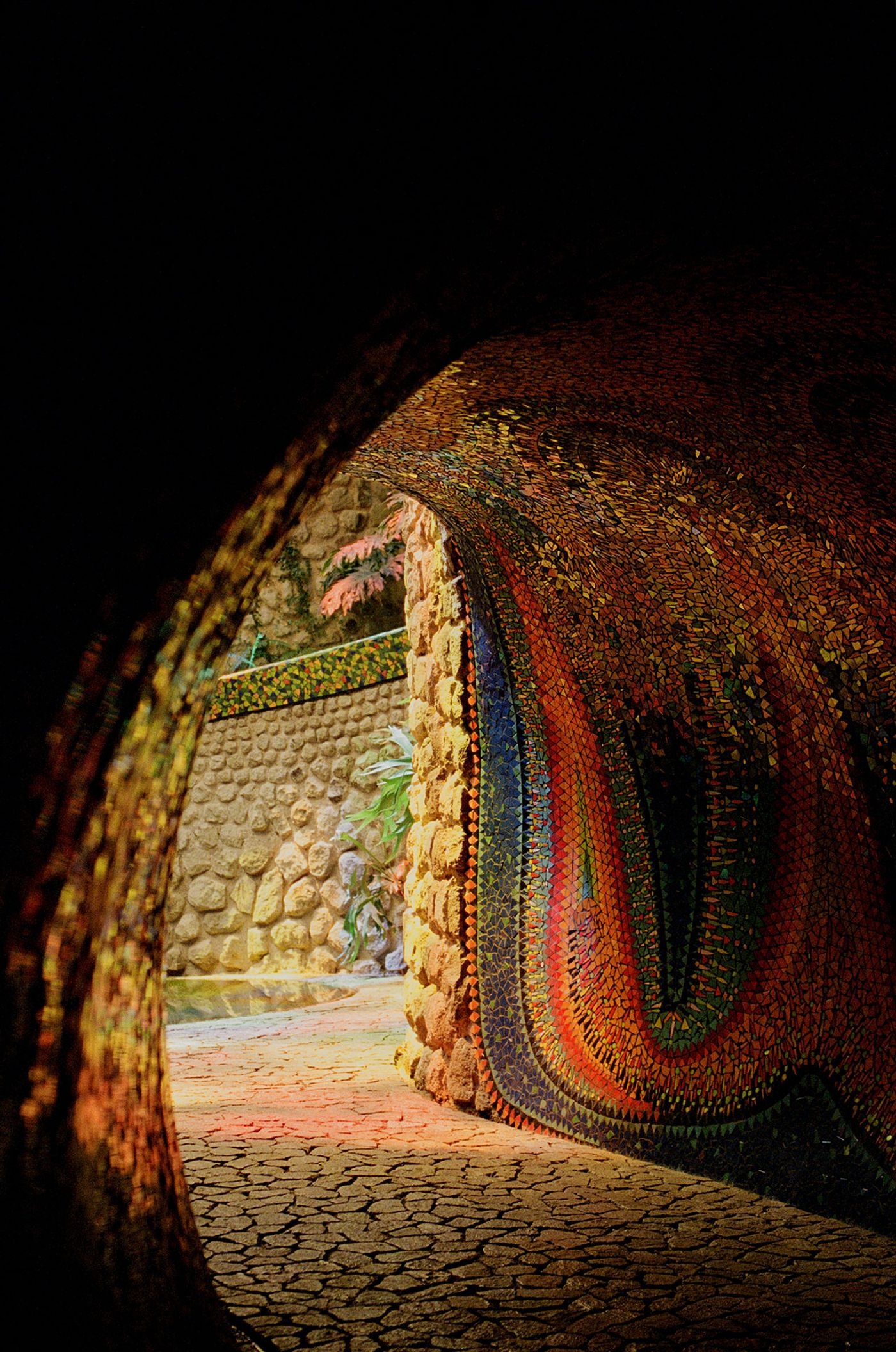
Photography by Anna Dave.

Photography by Anna Dave.
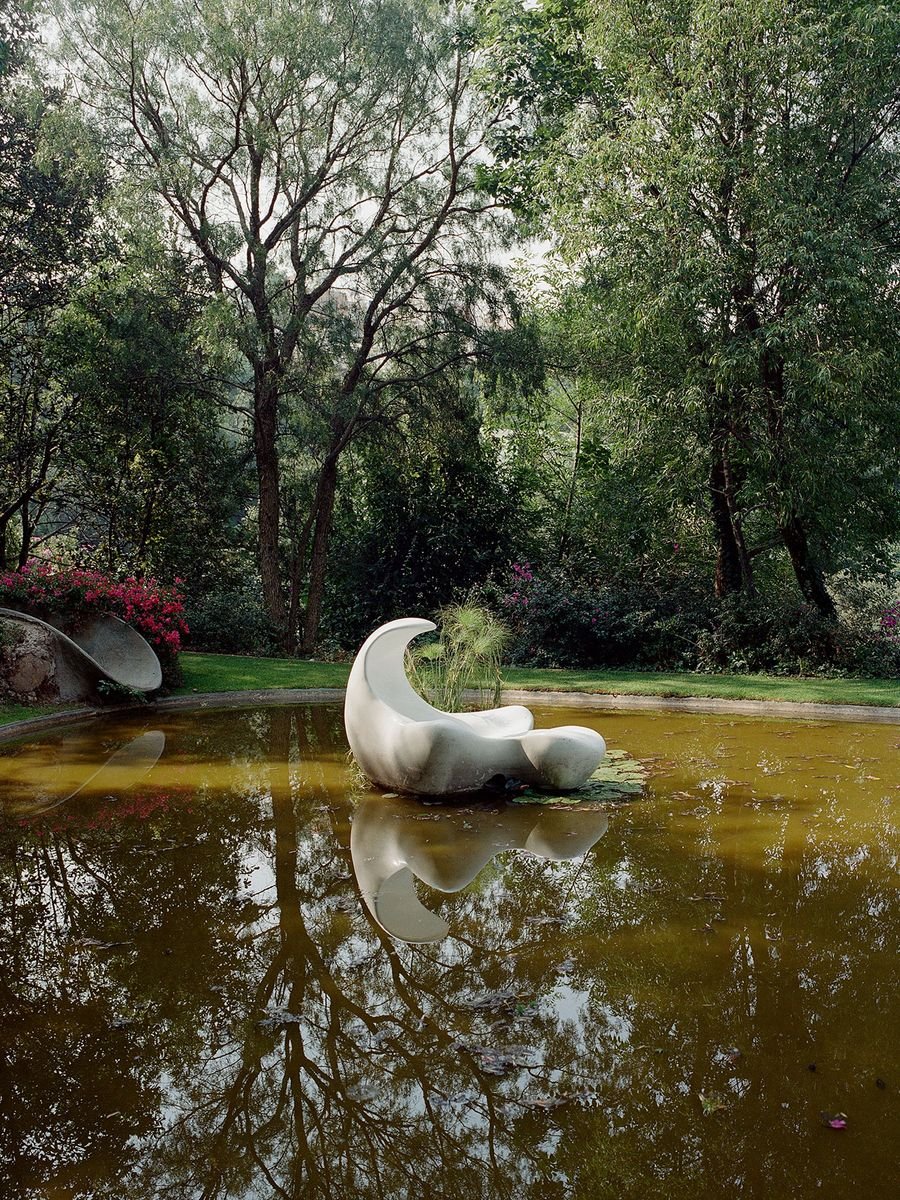
Photography by Anna Dave.

Photography by Anna Dave.
